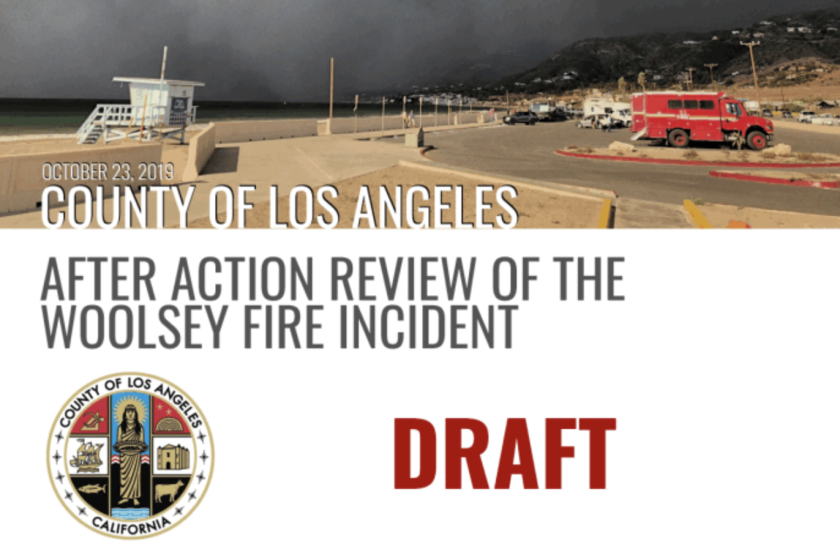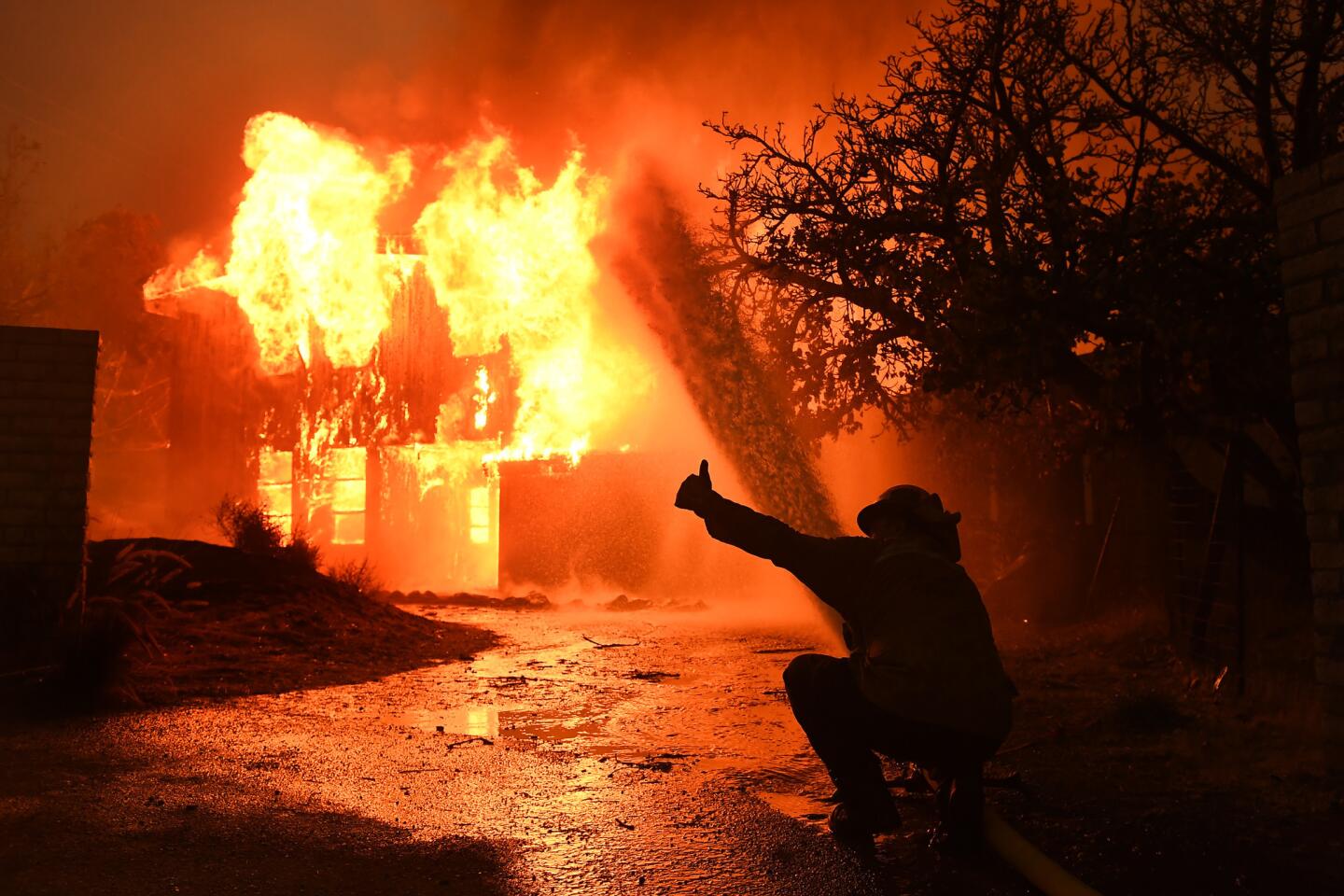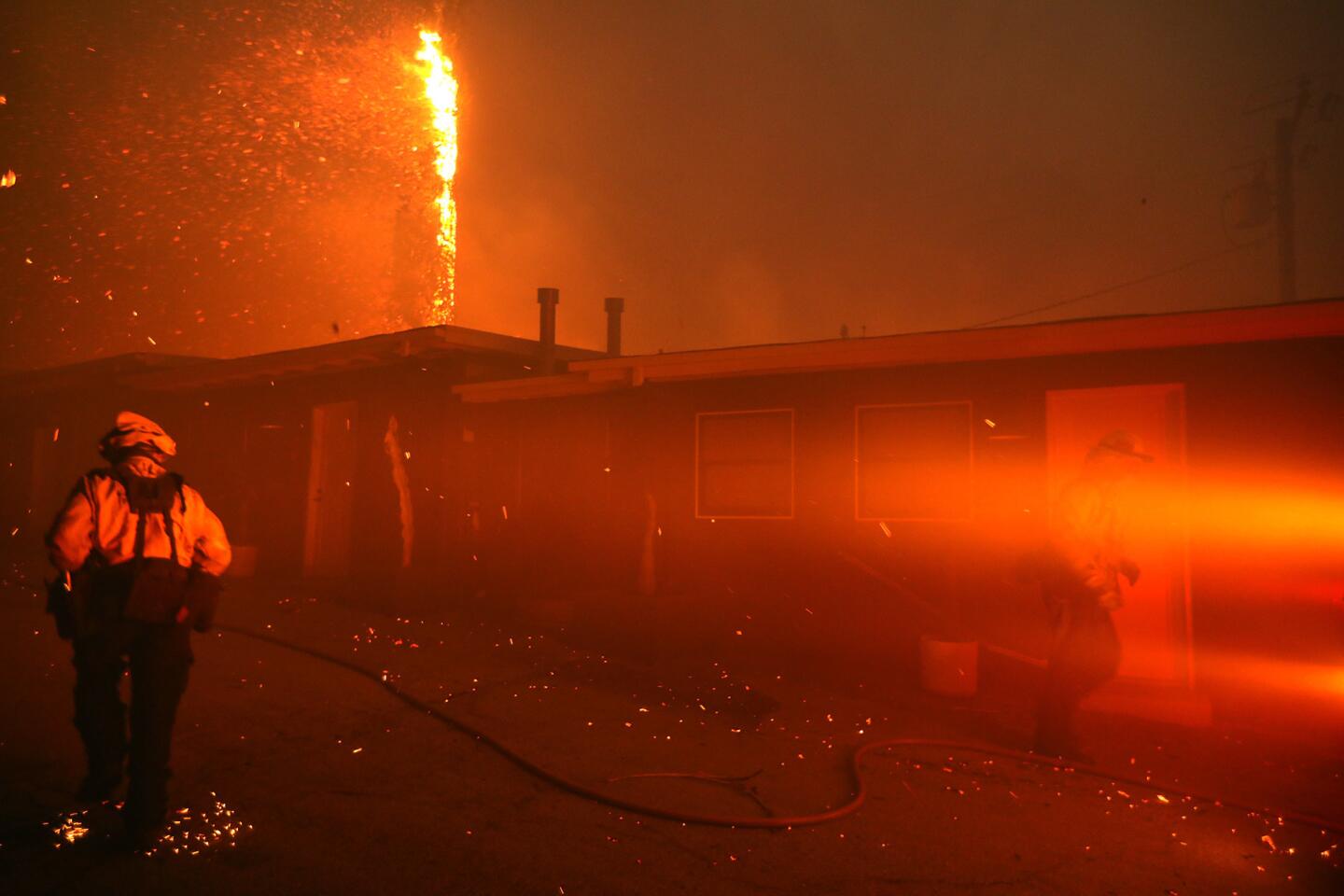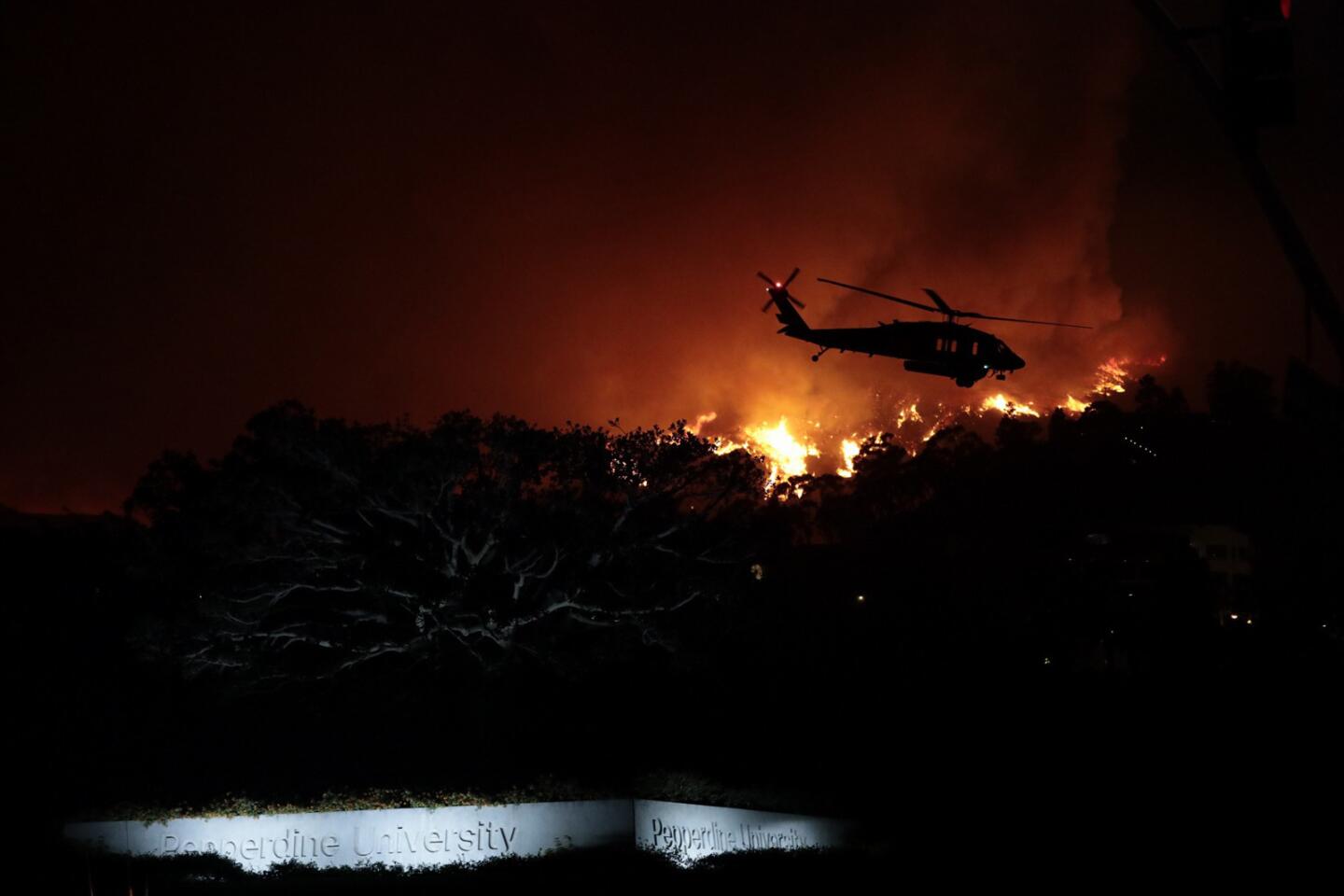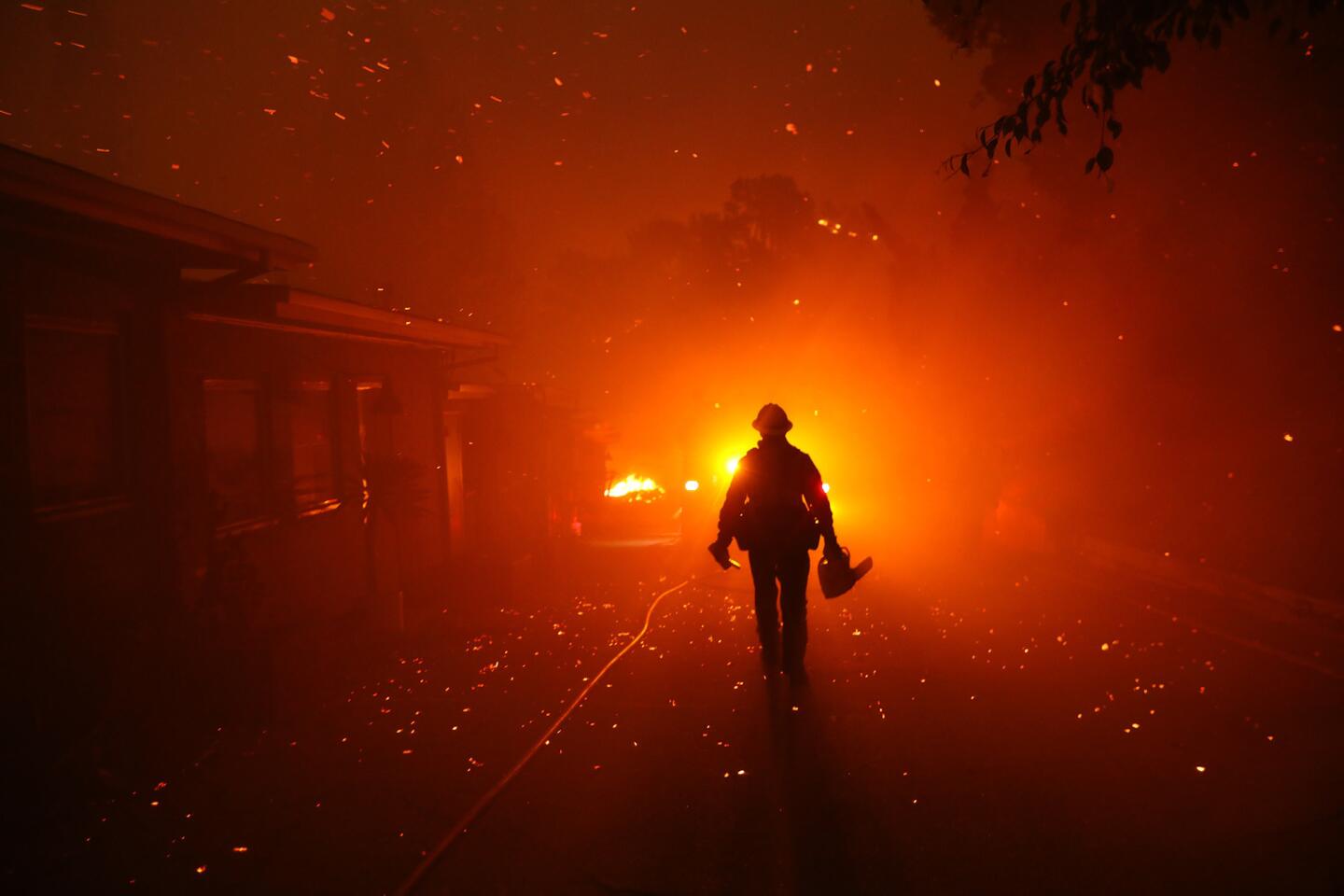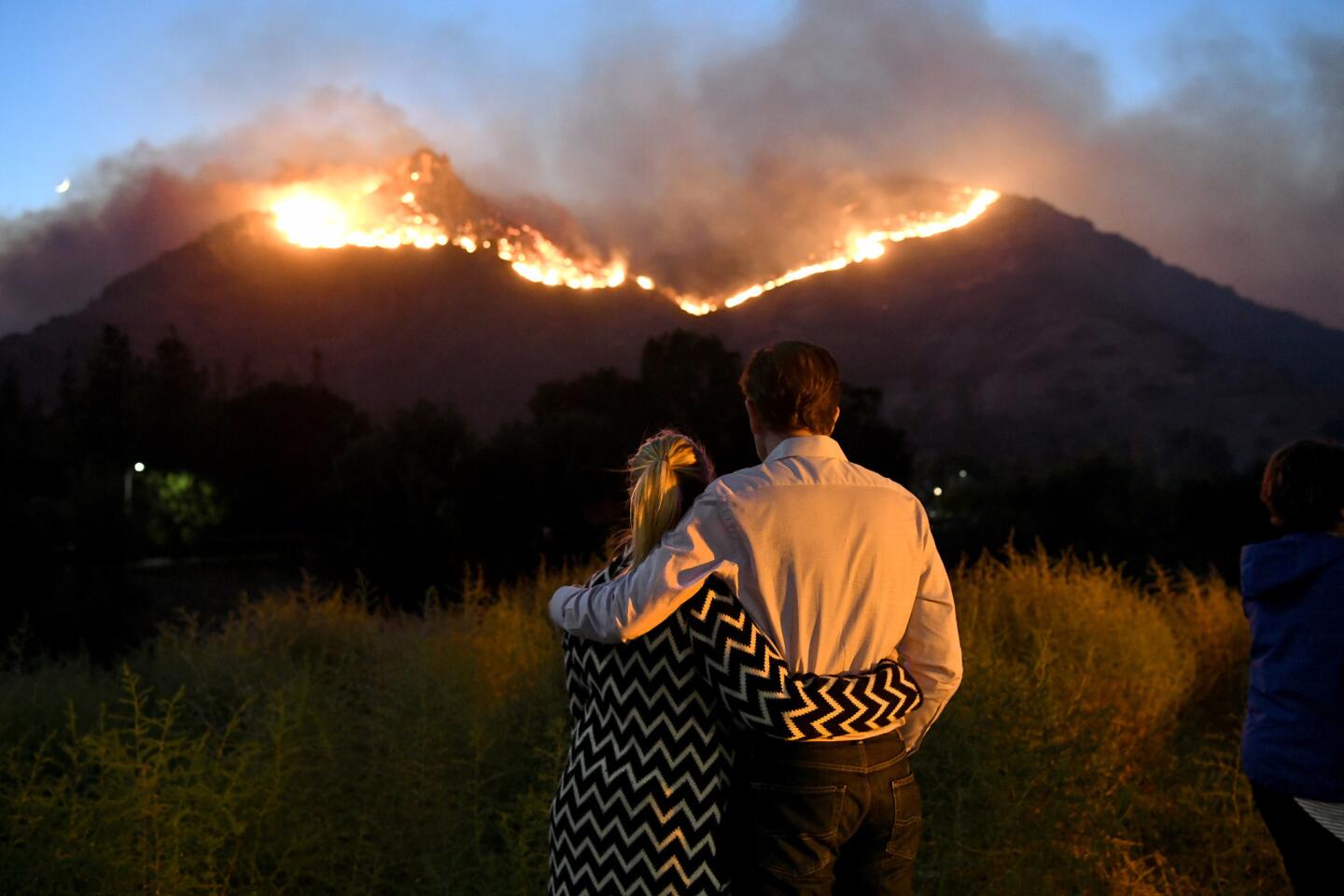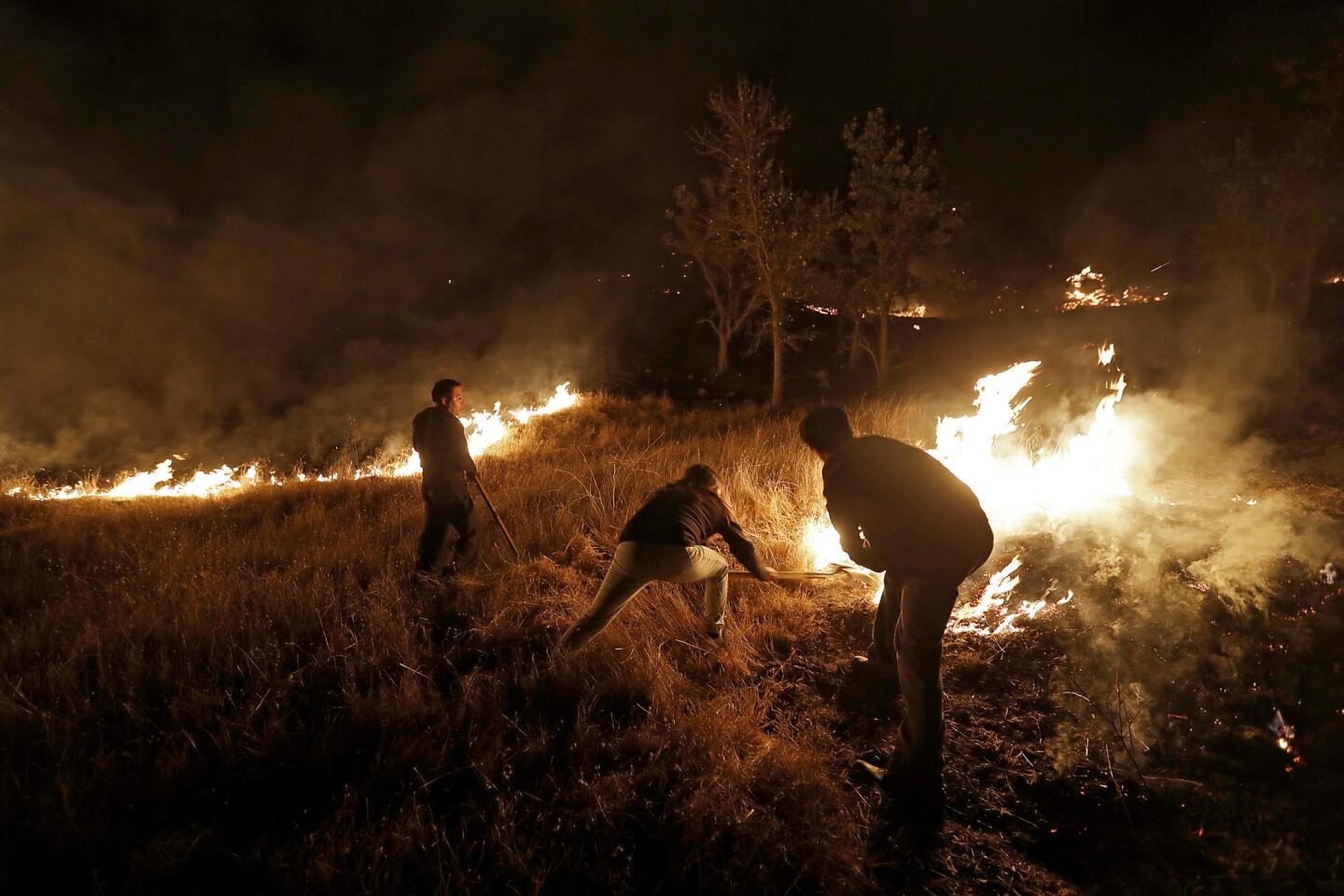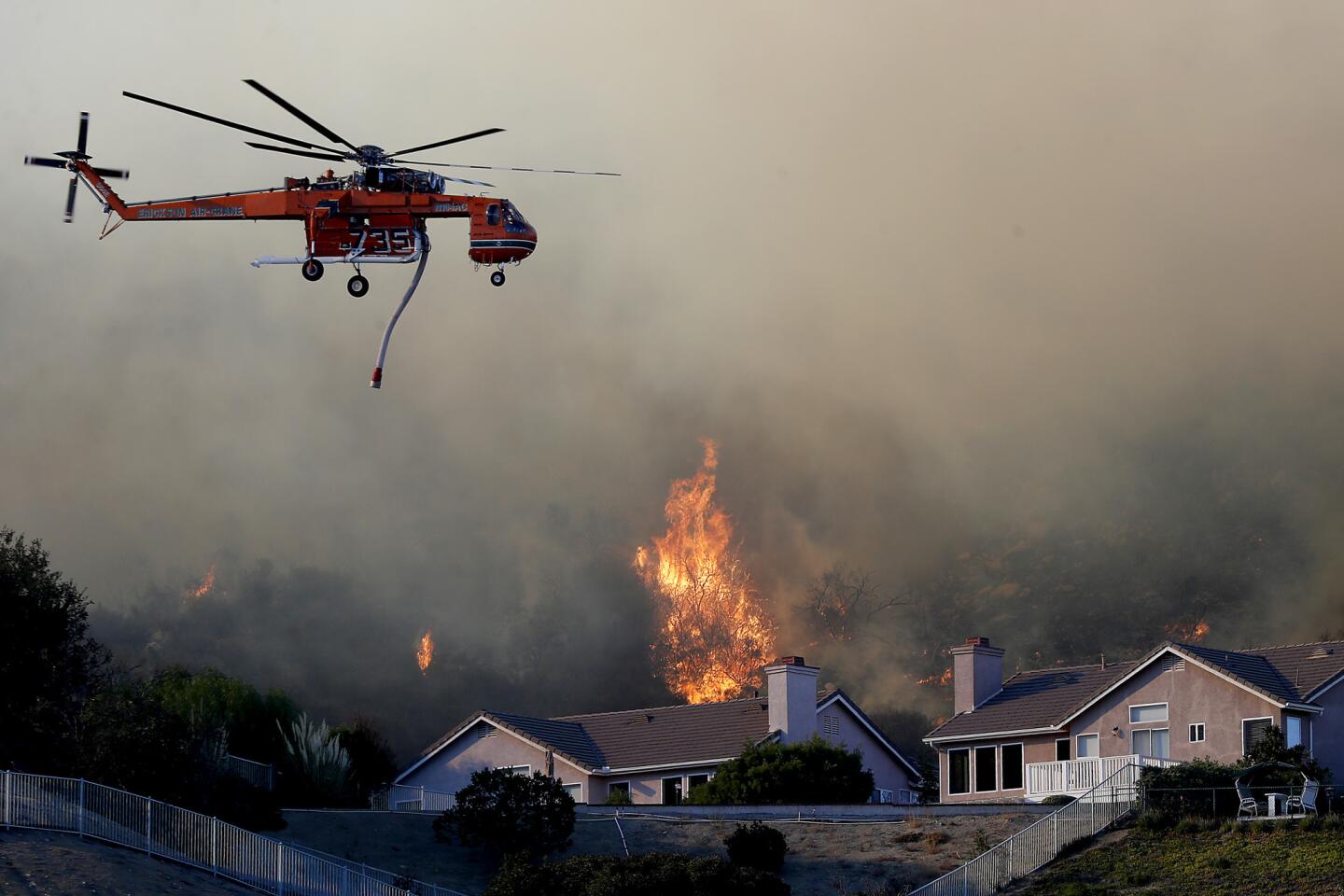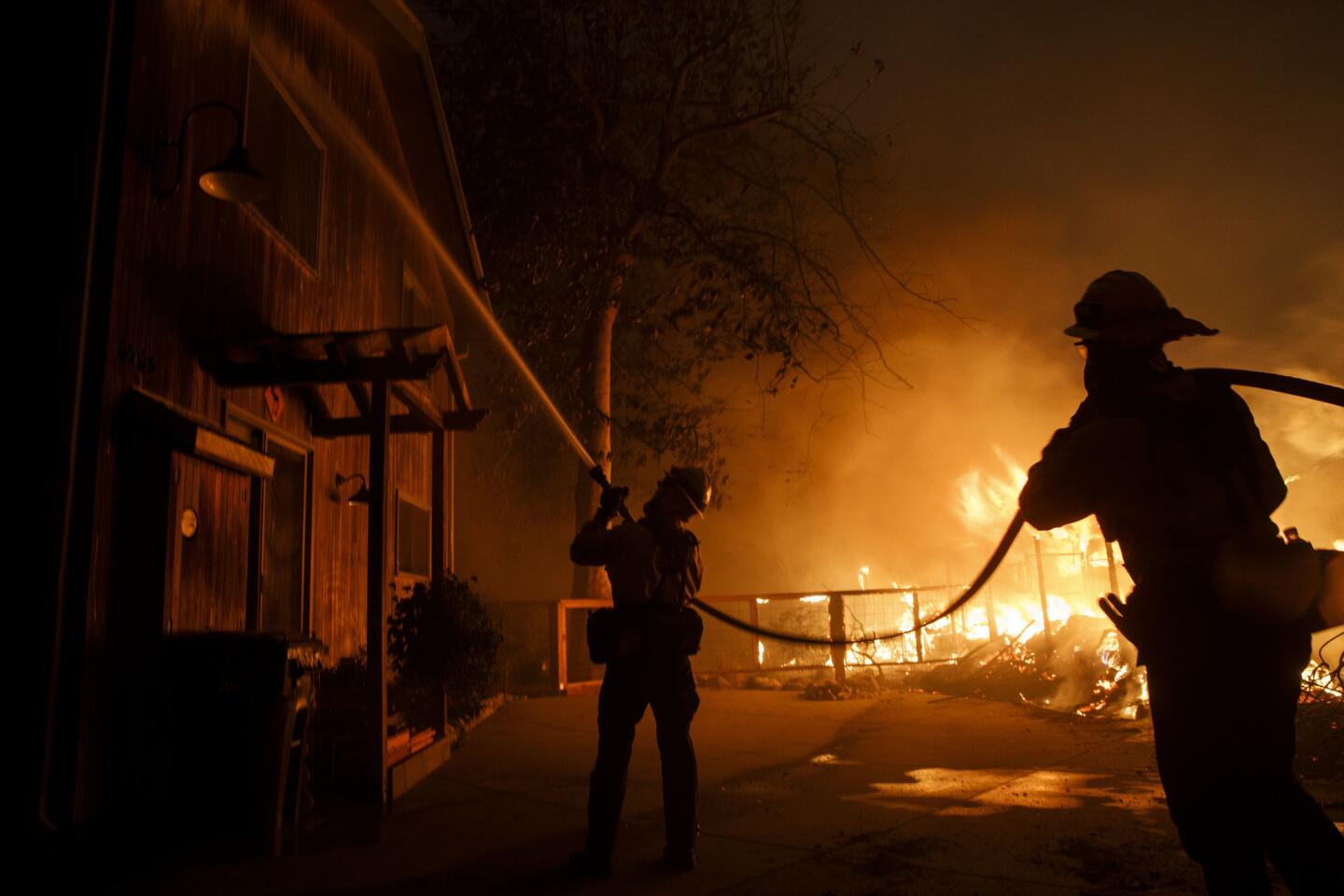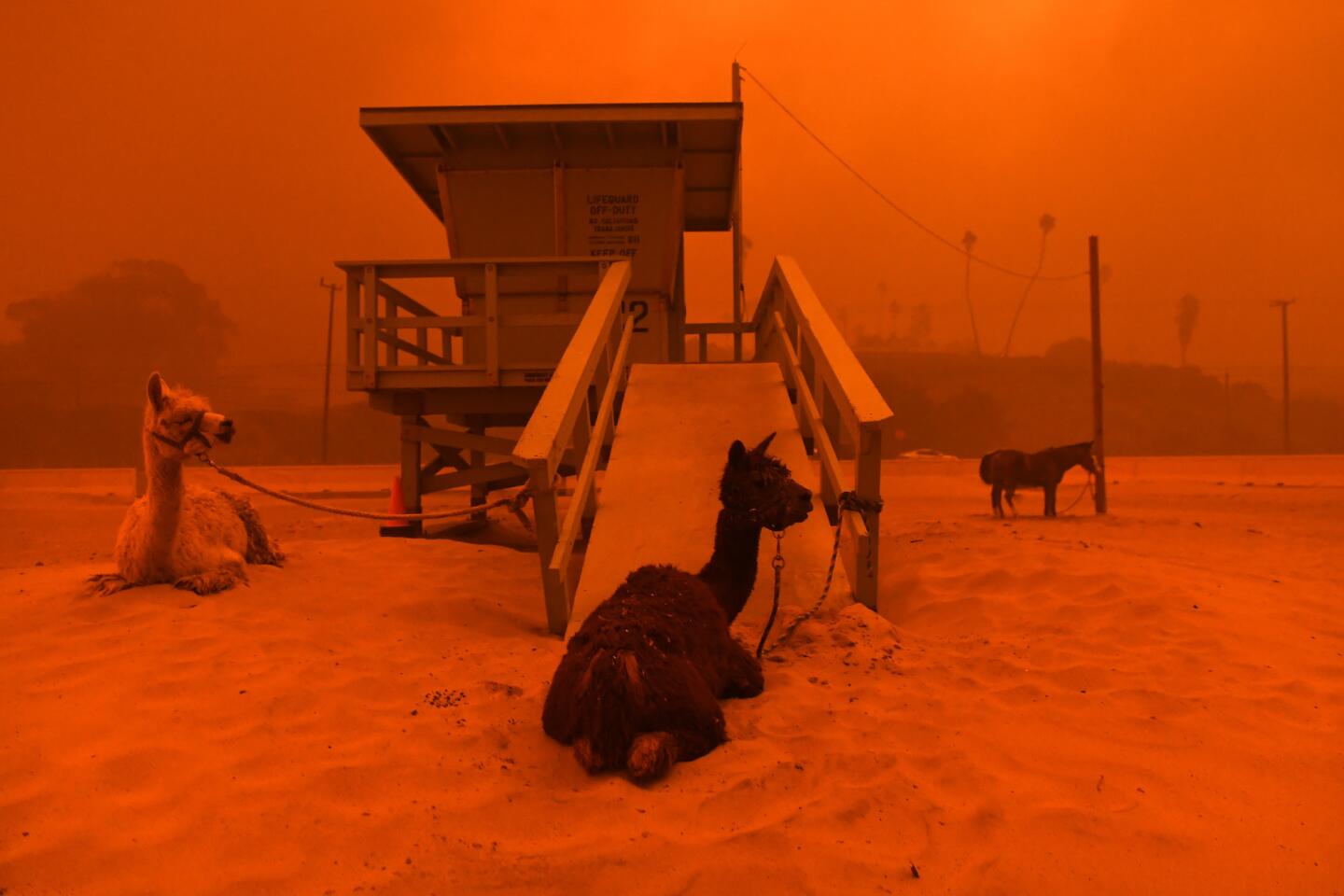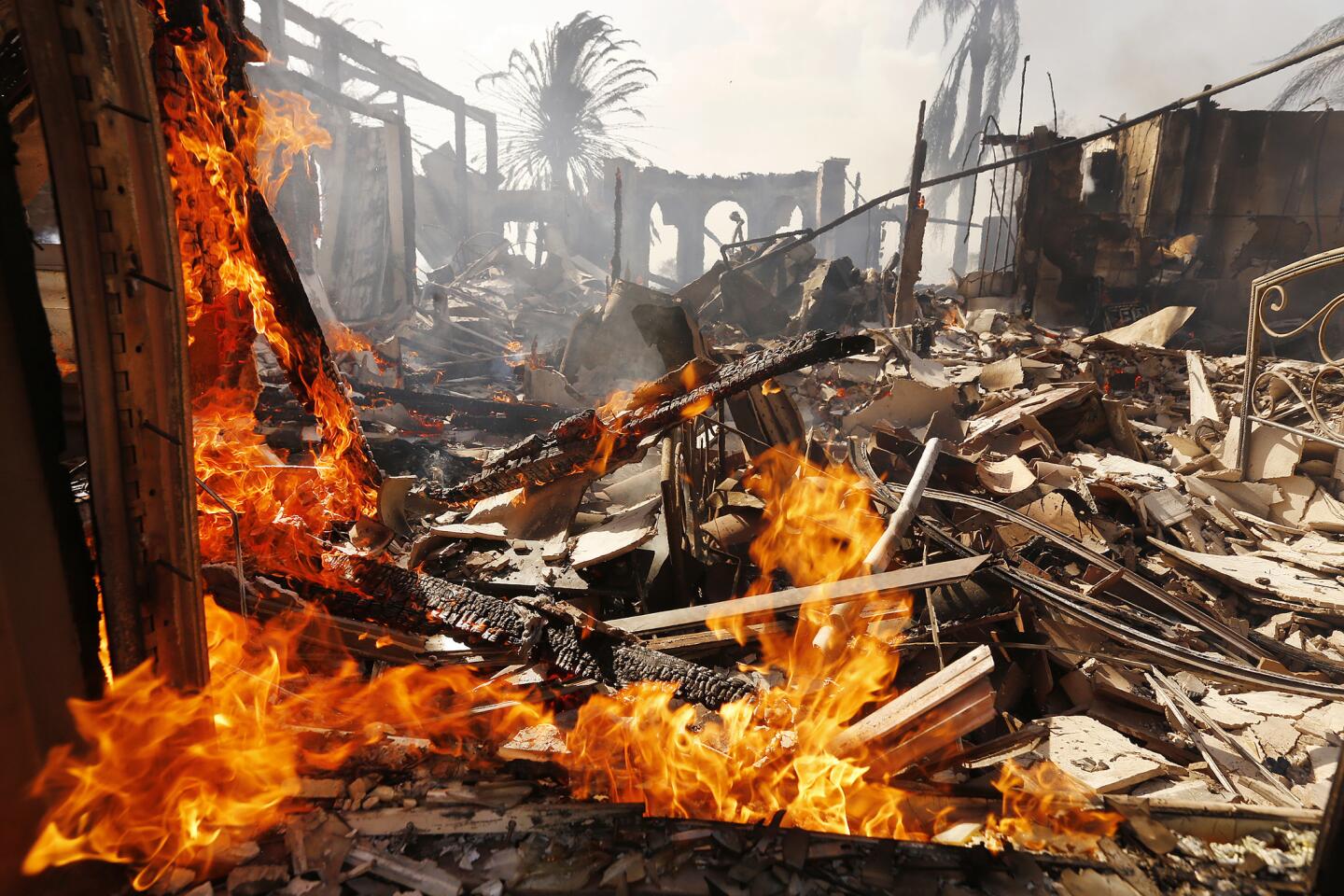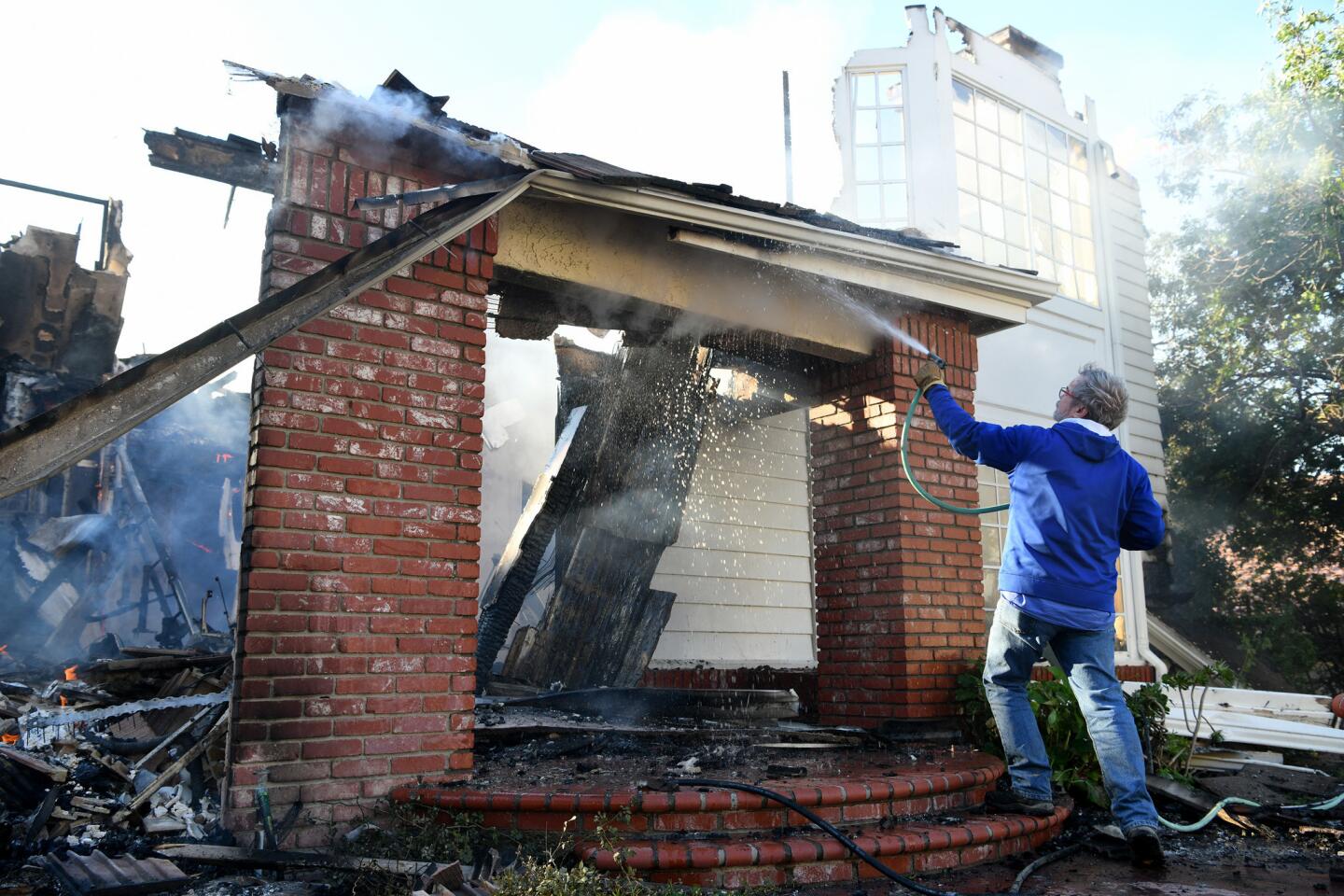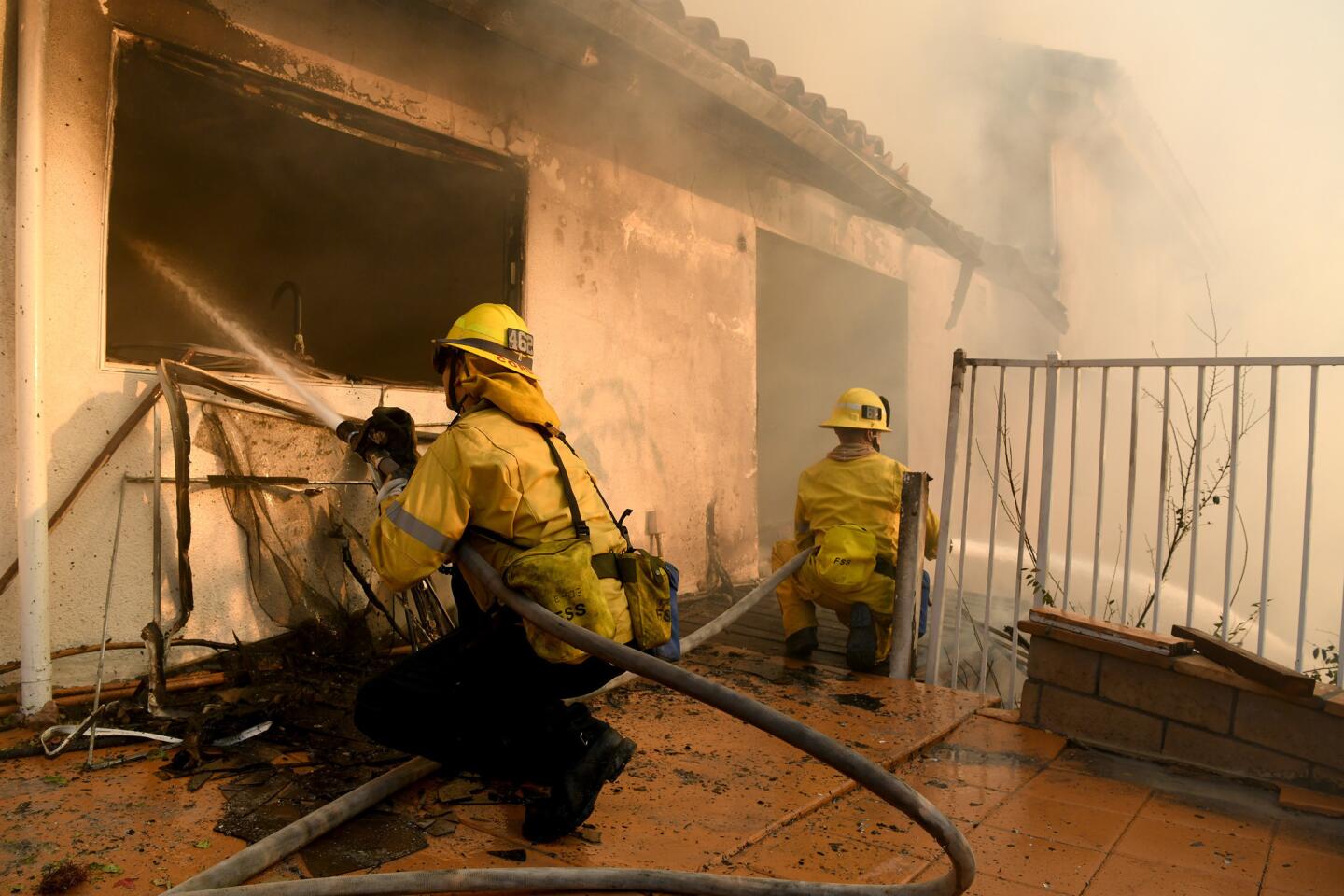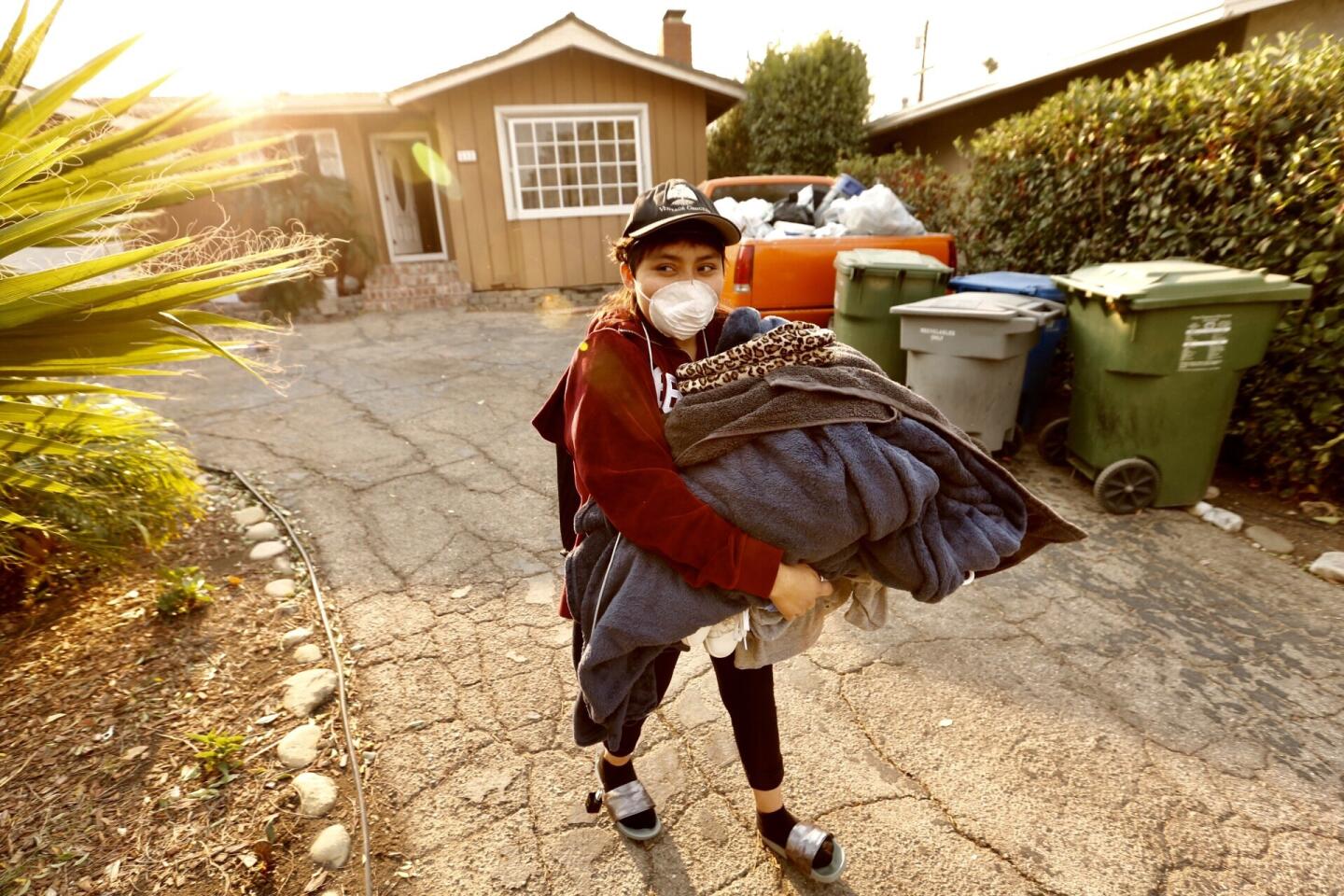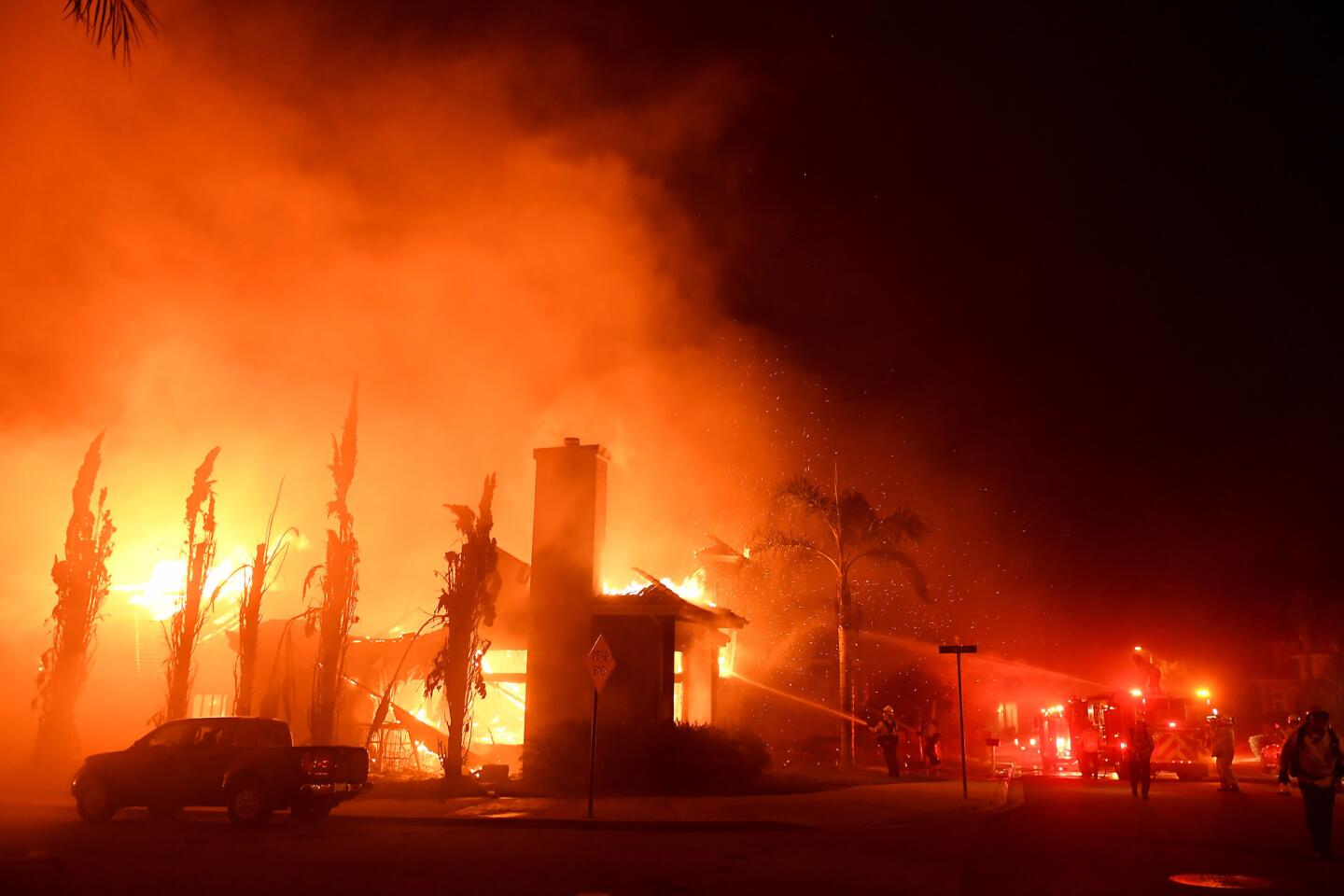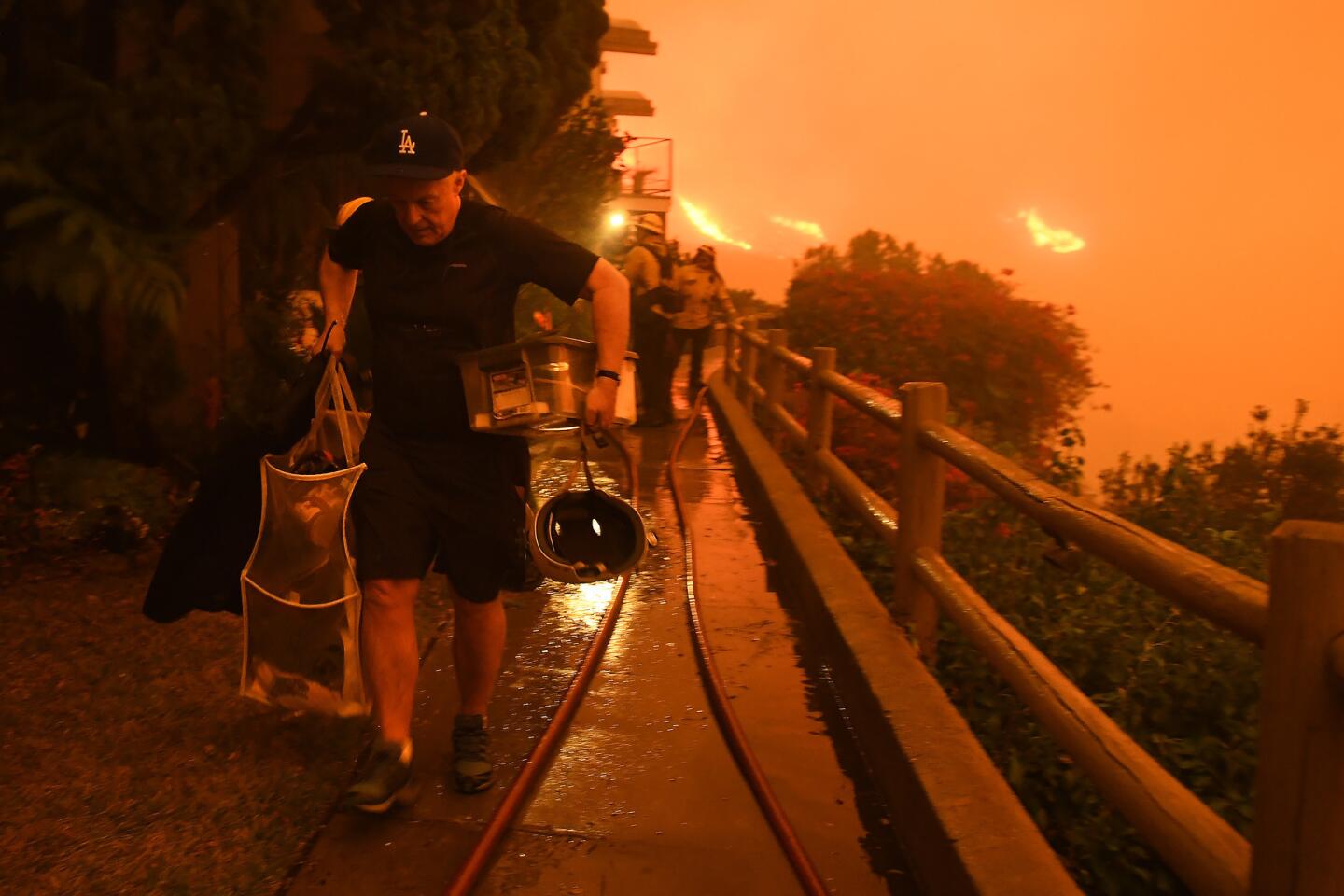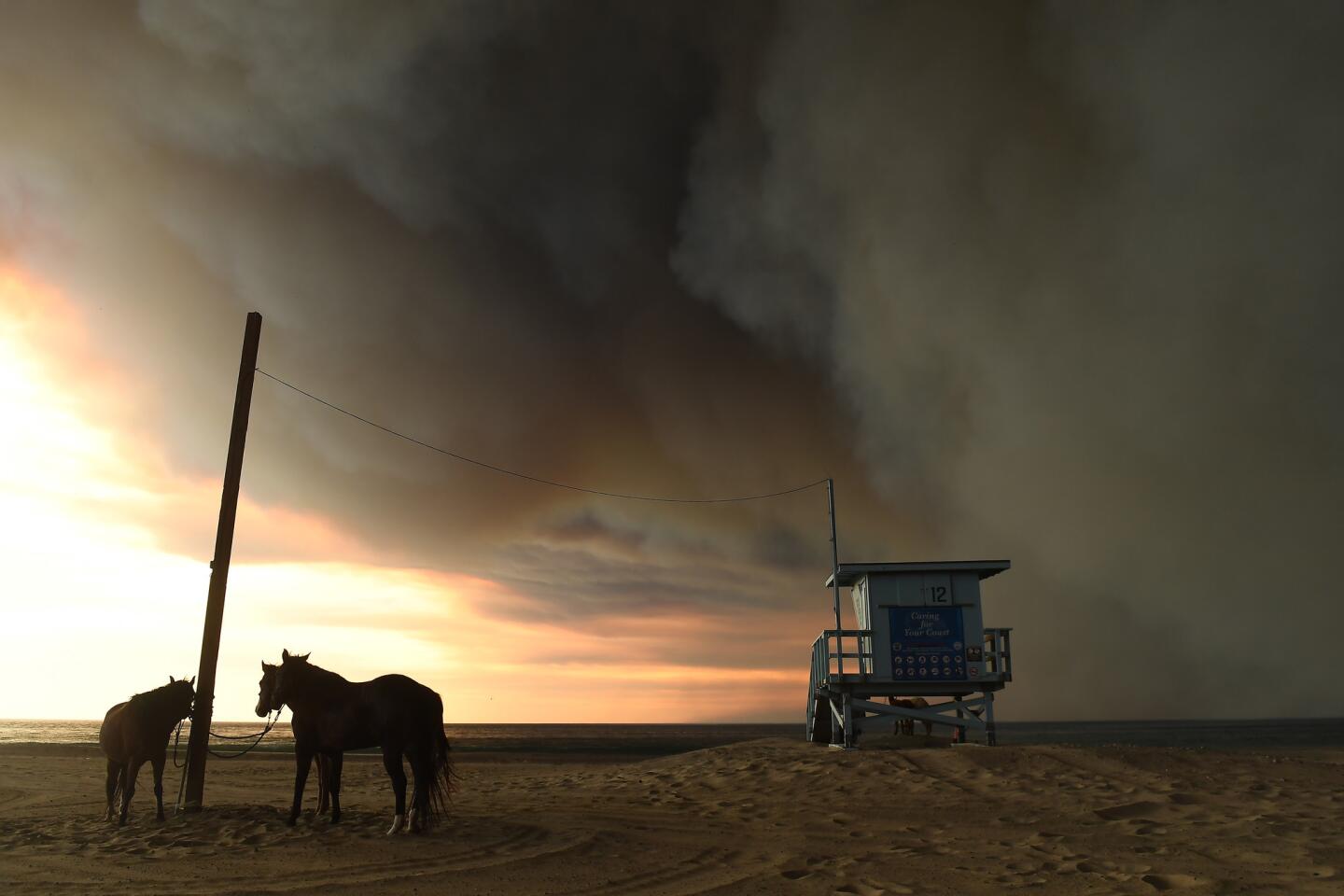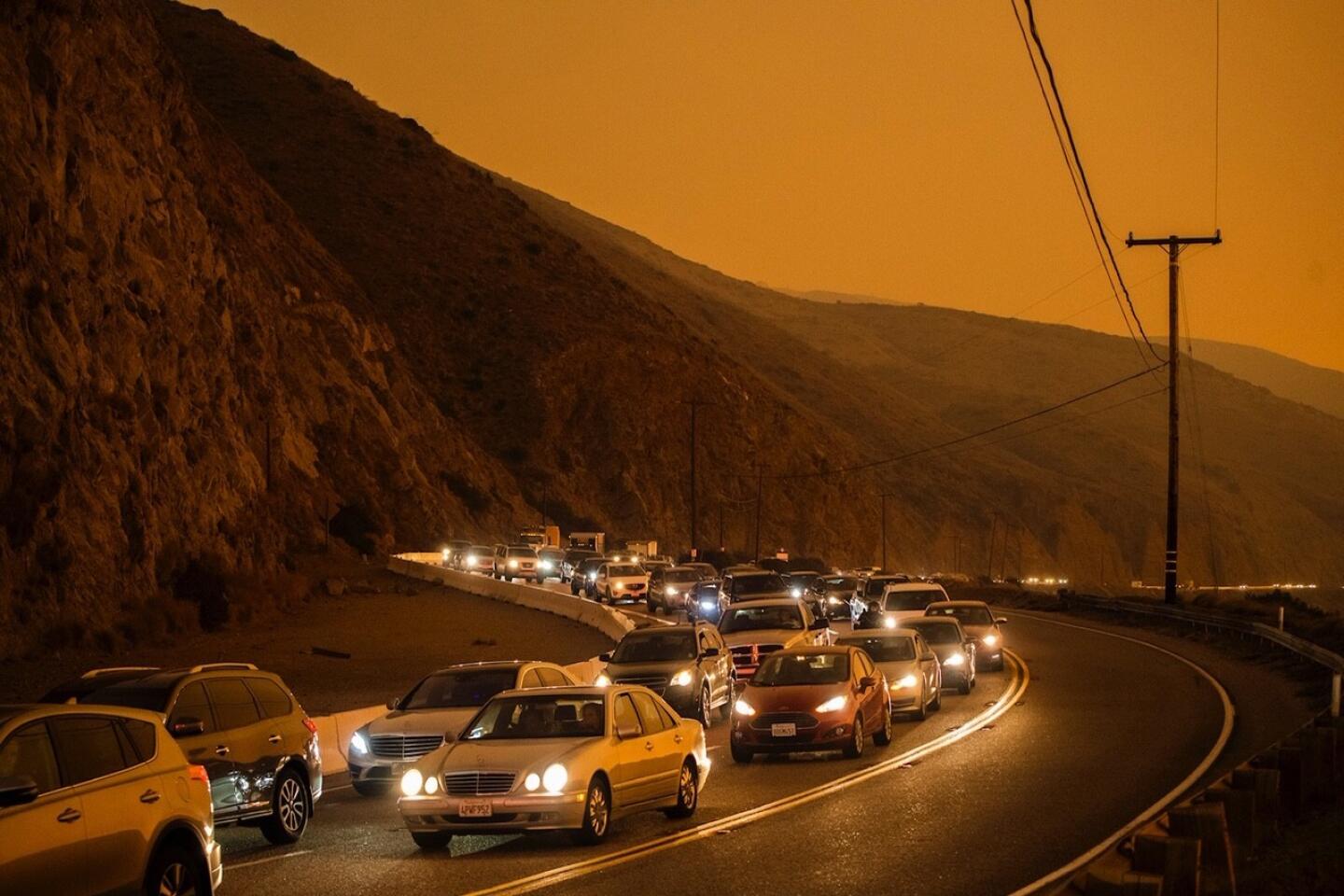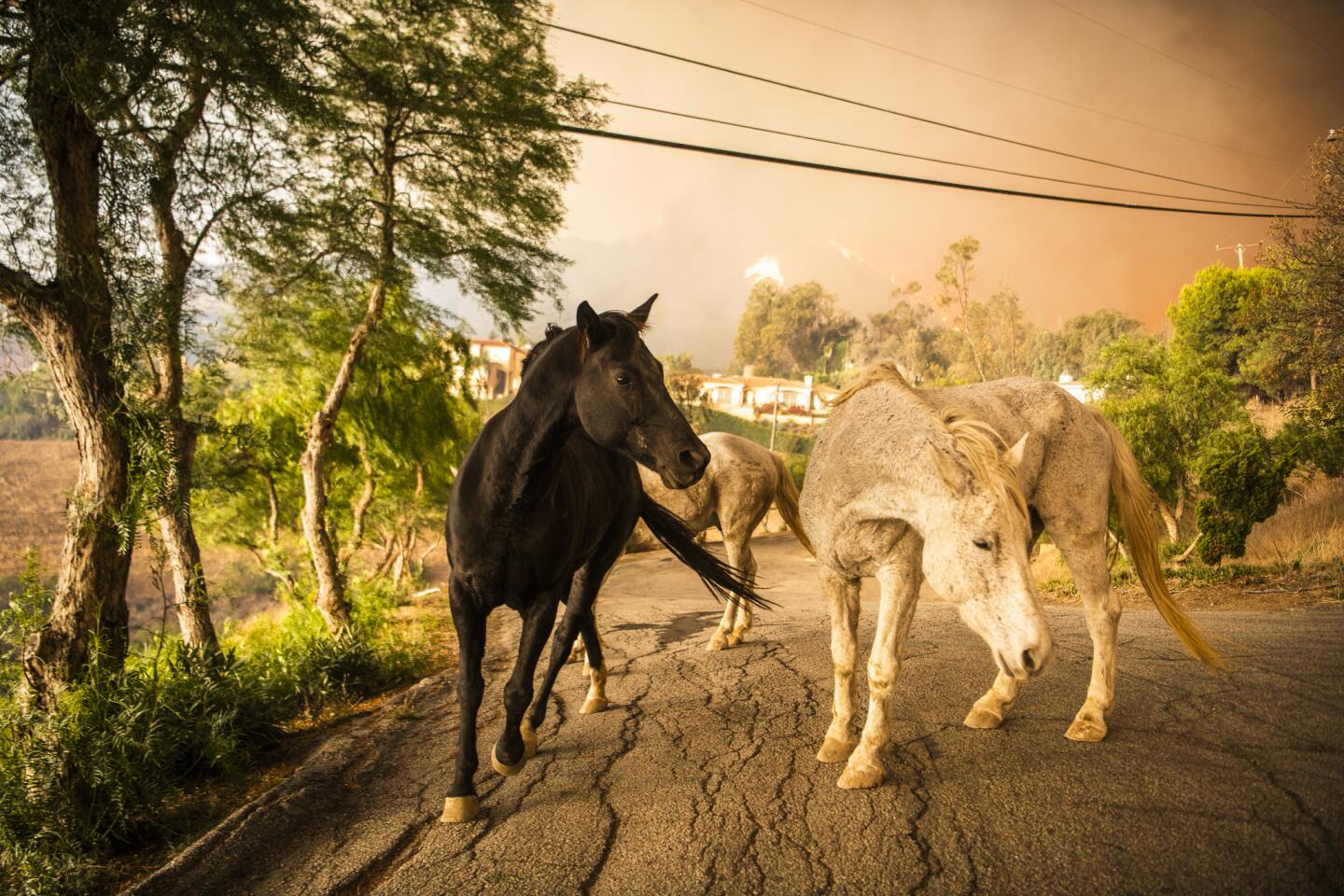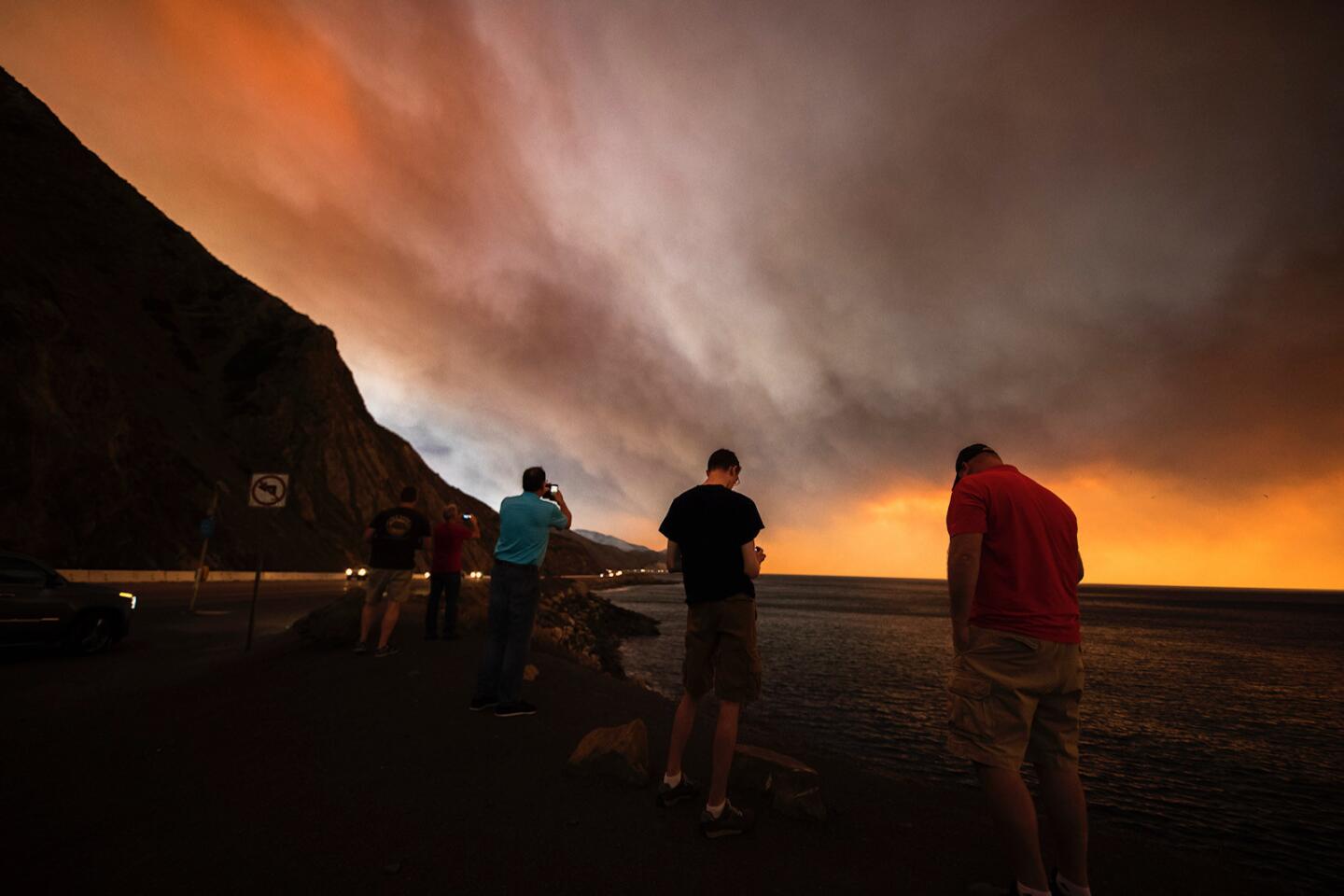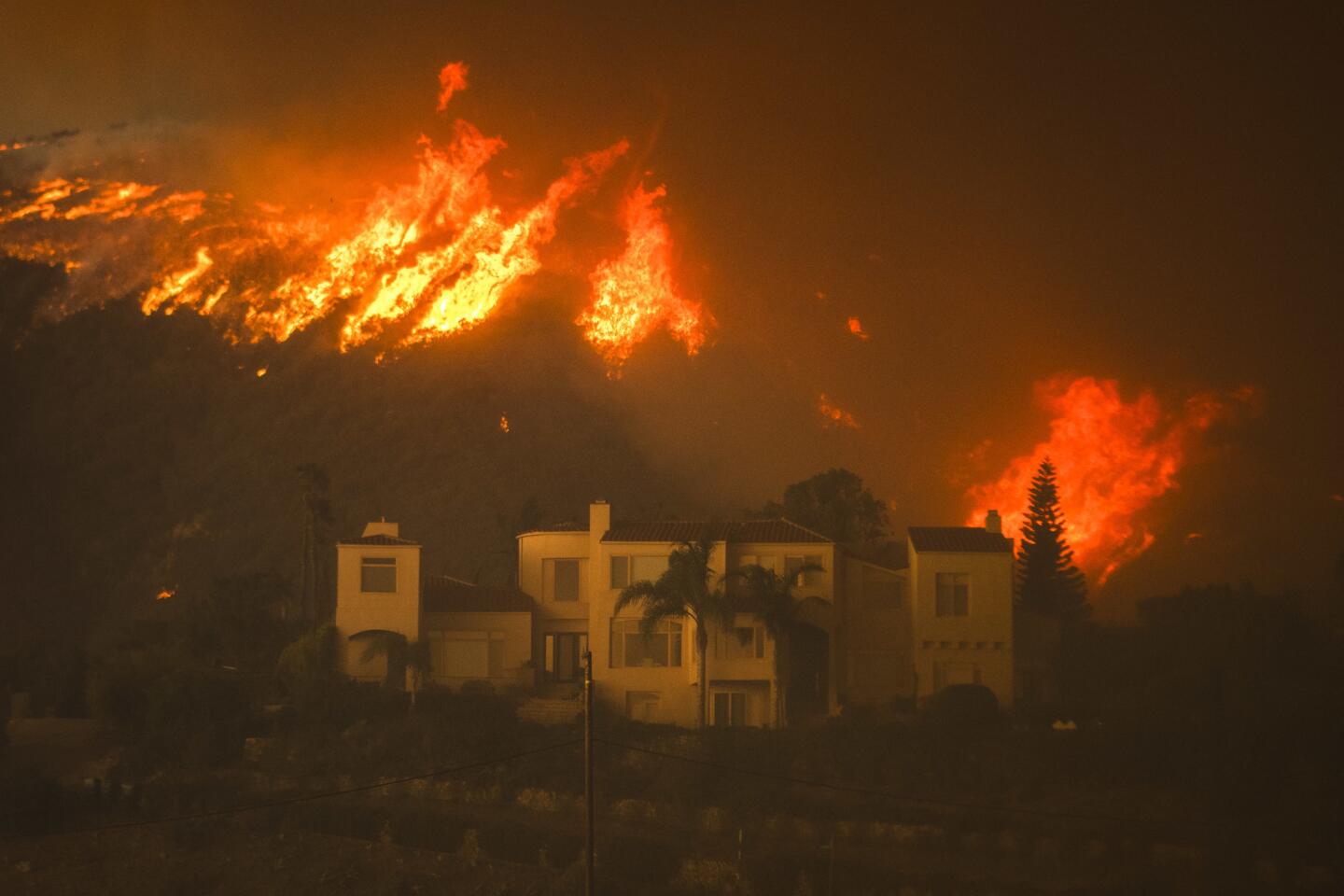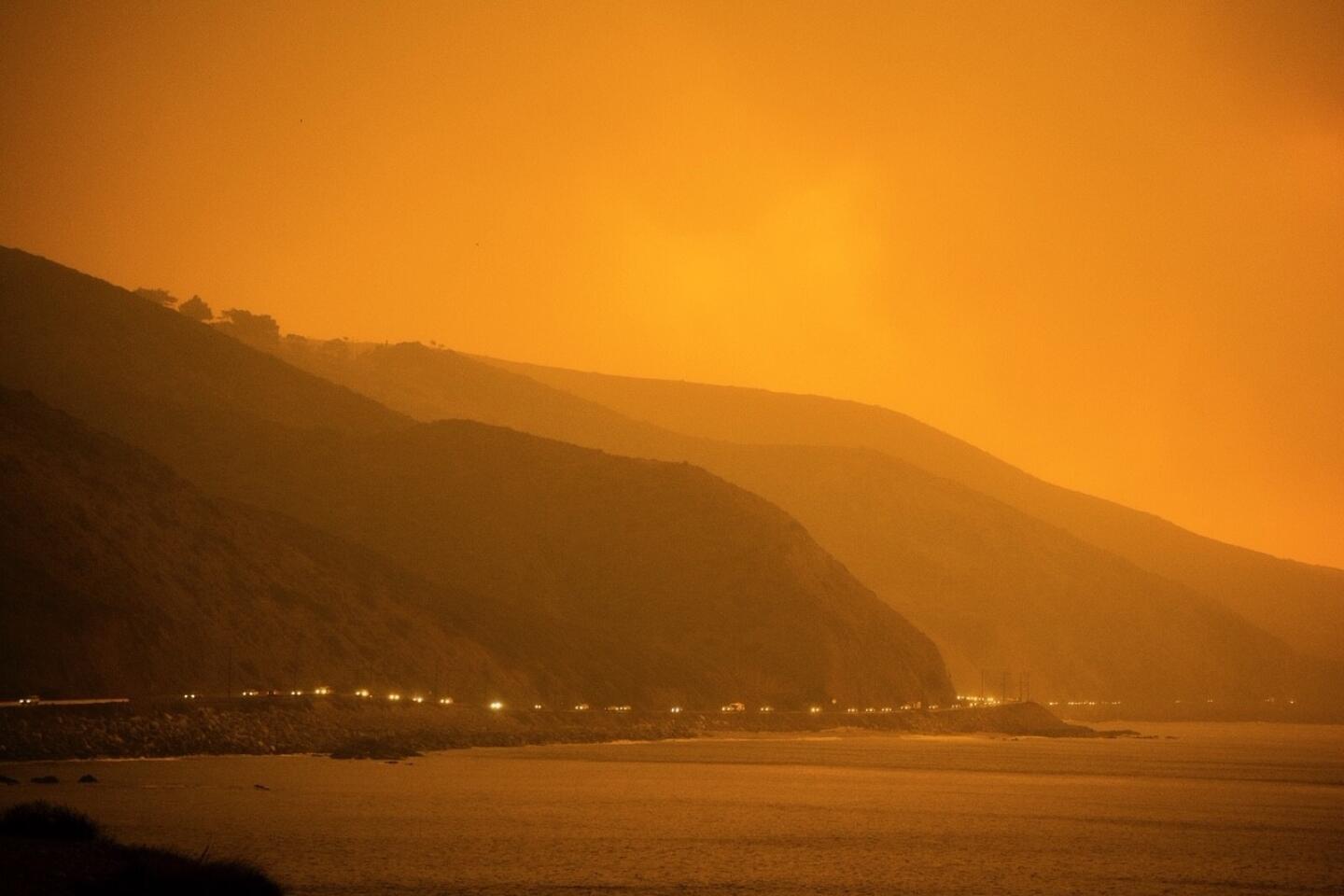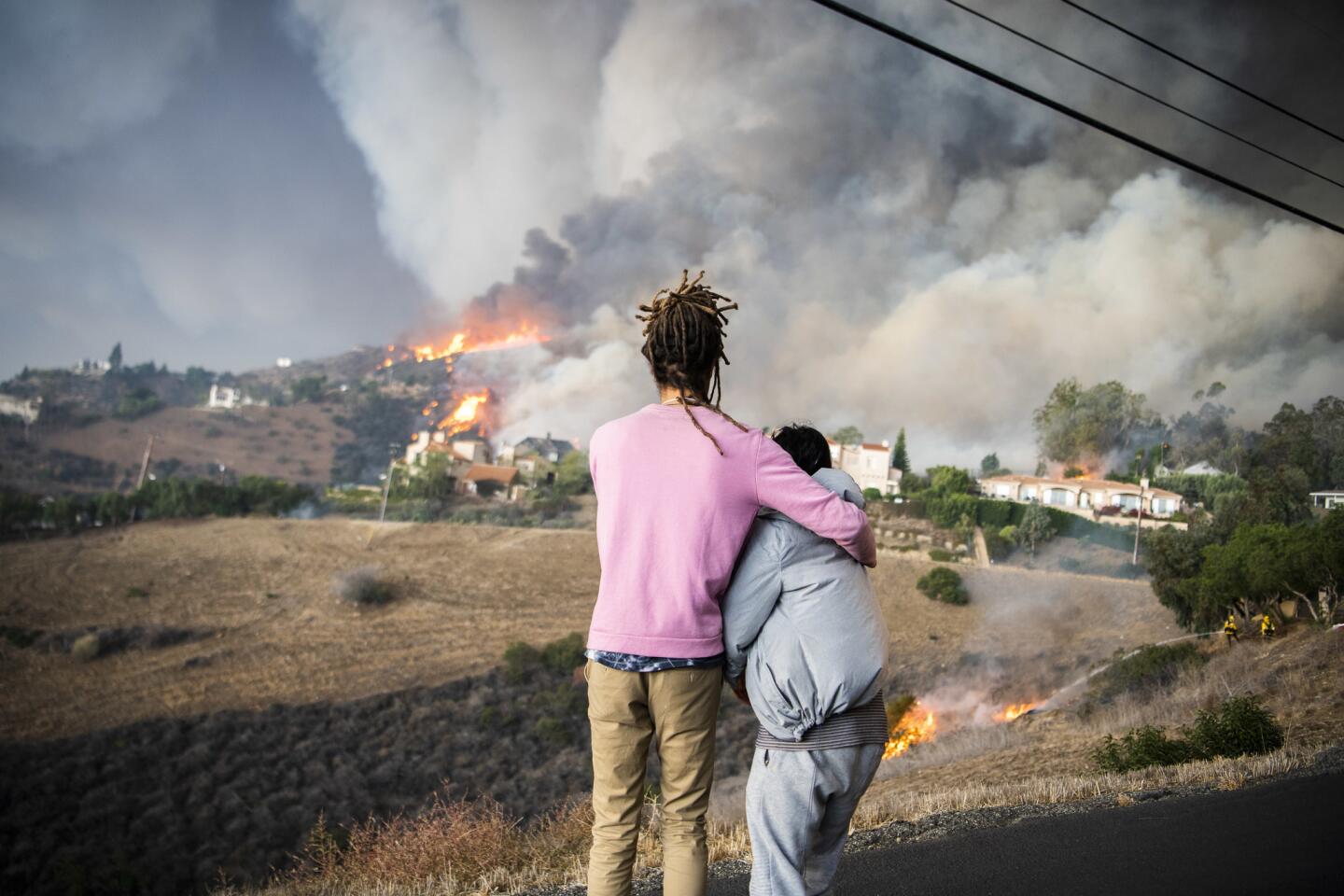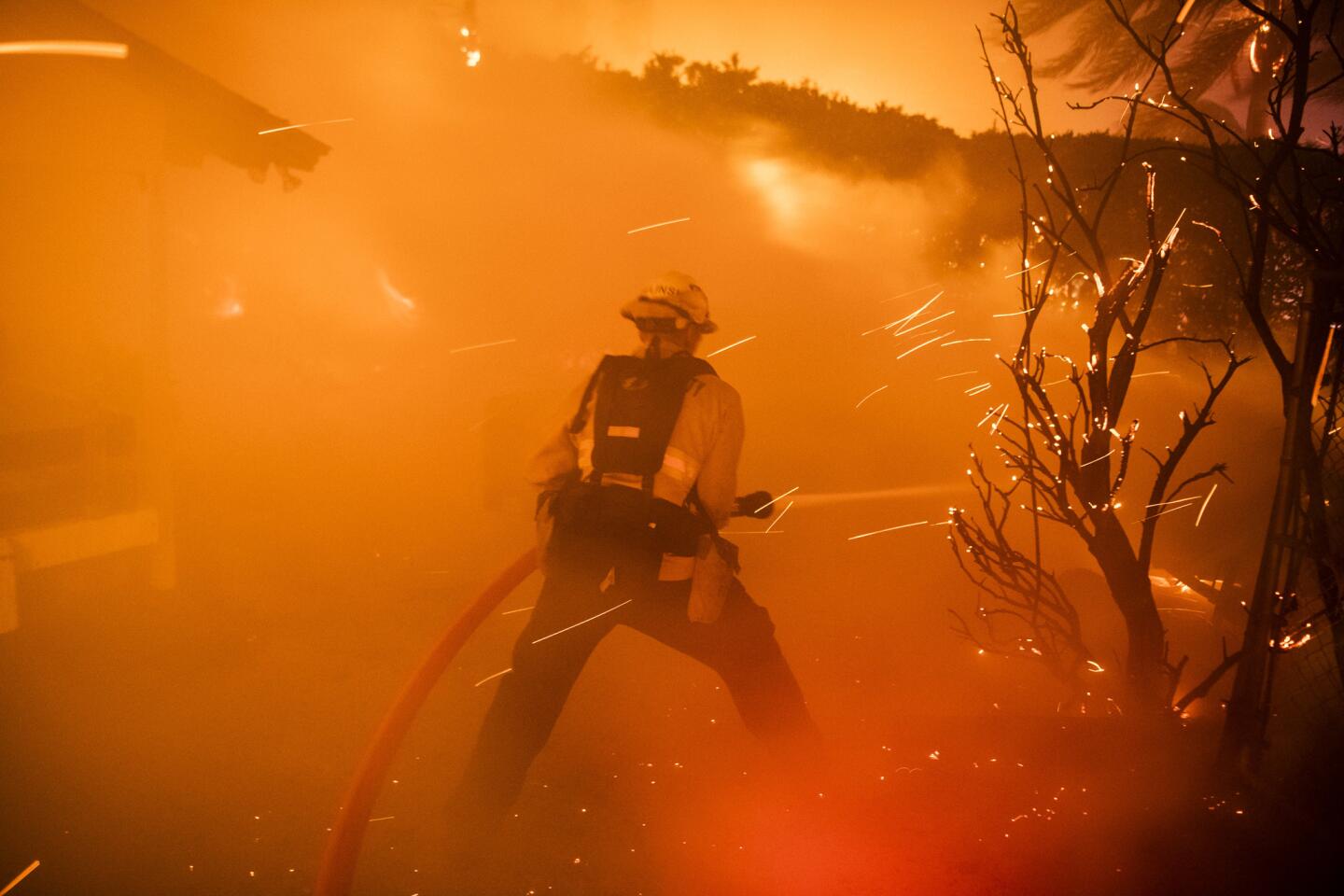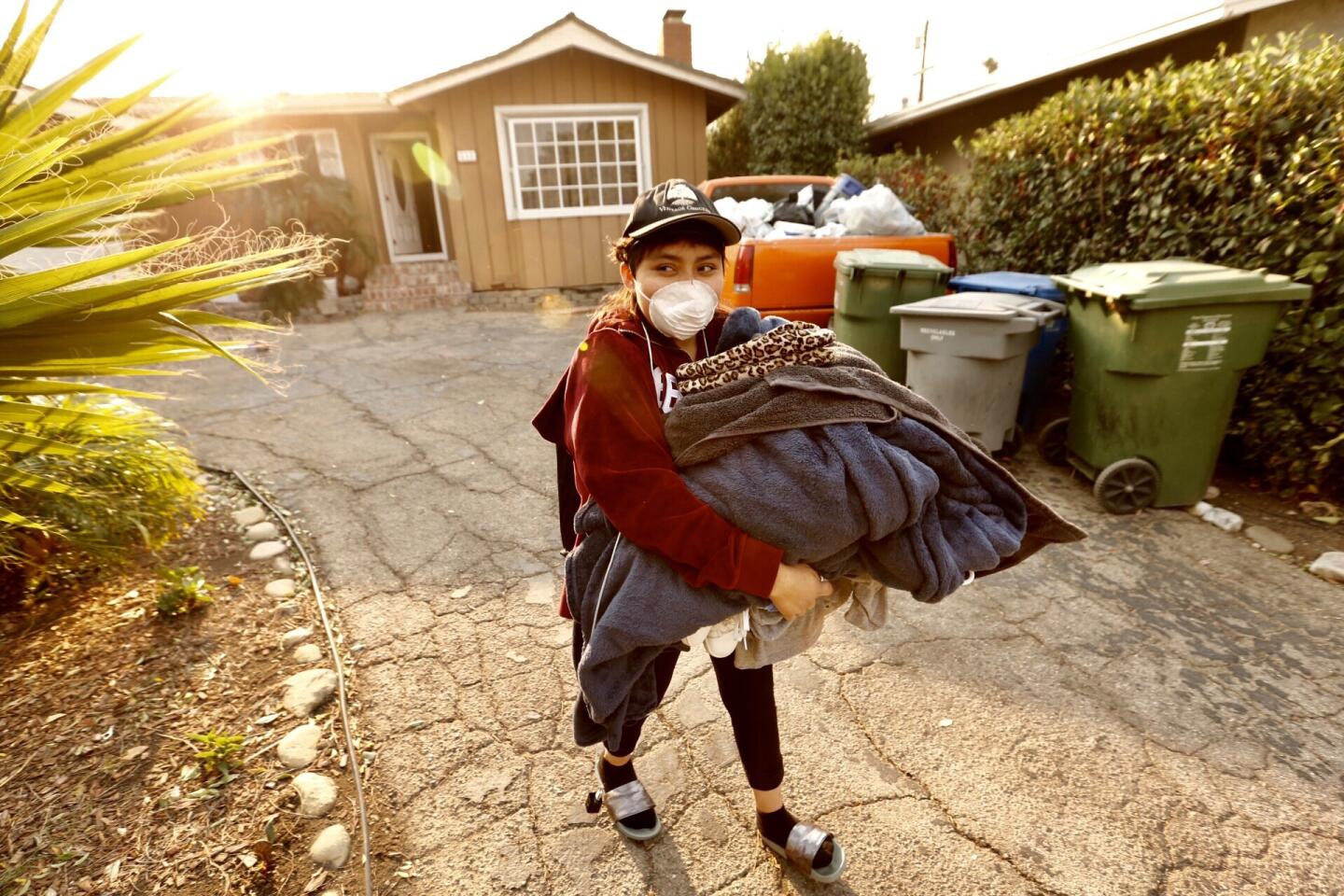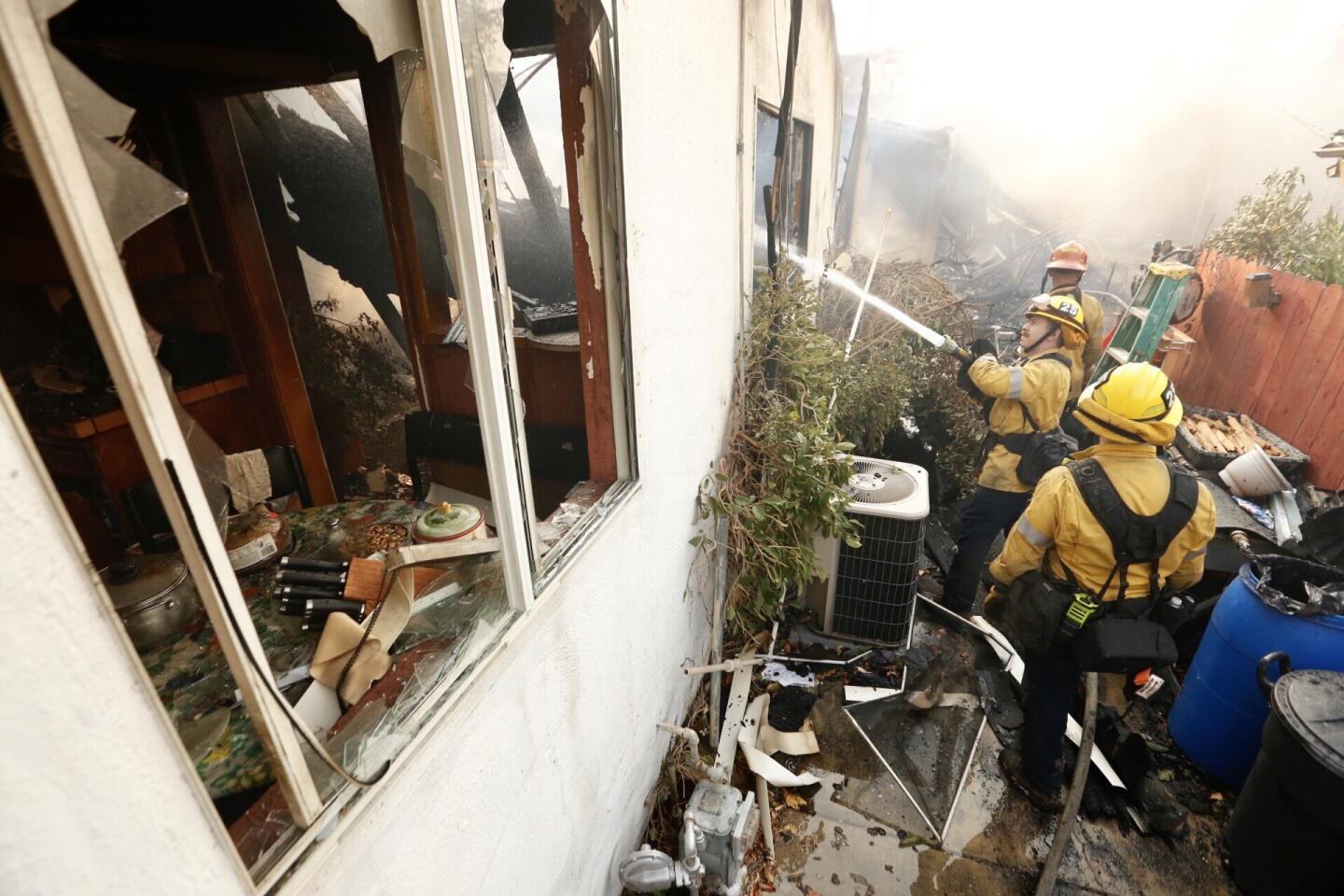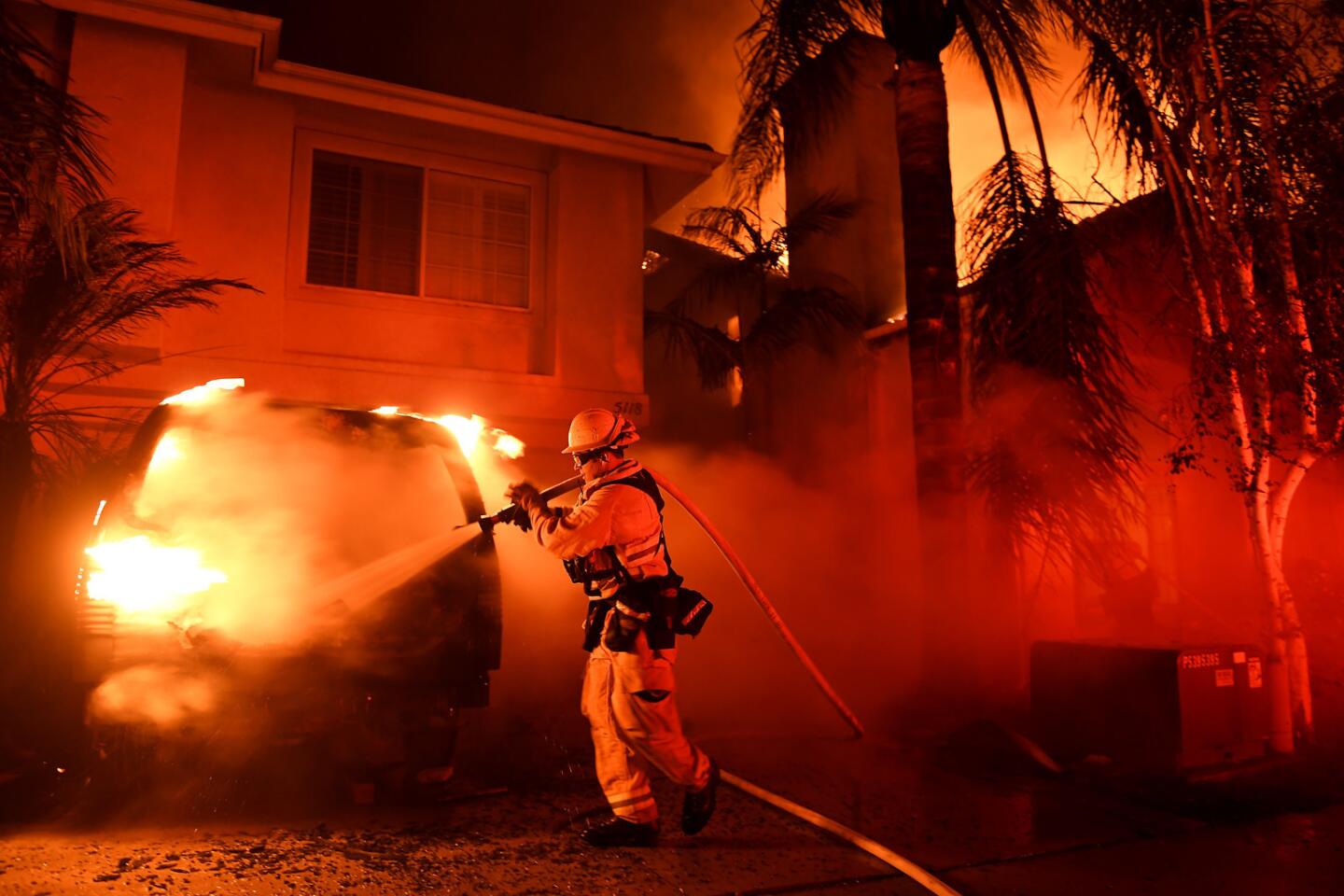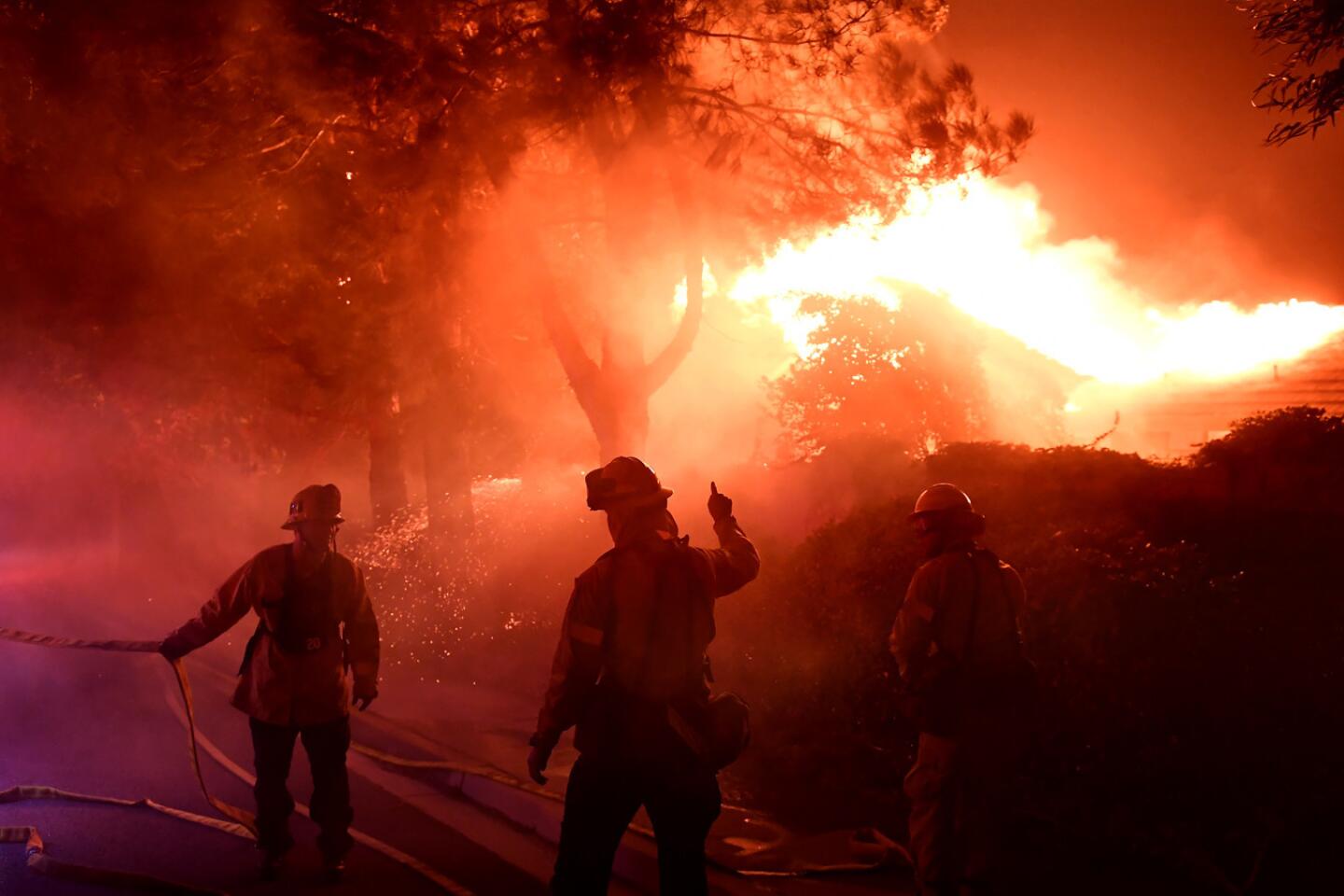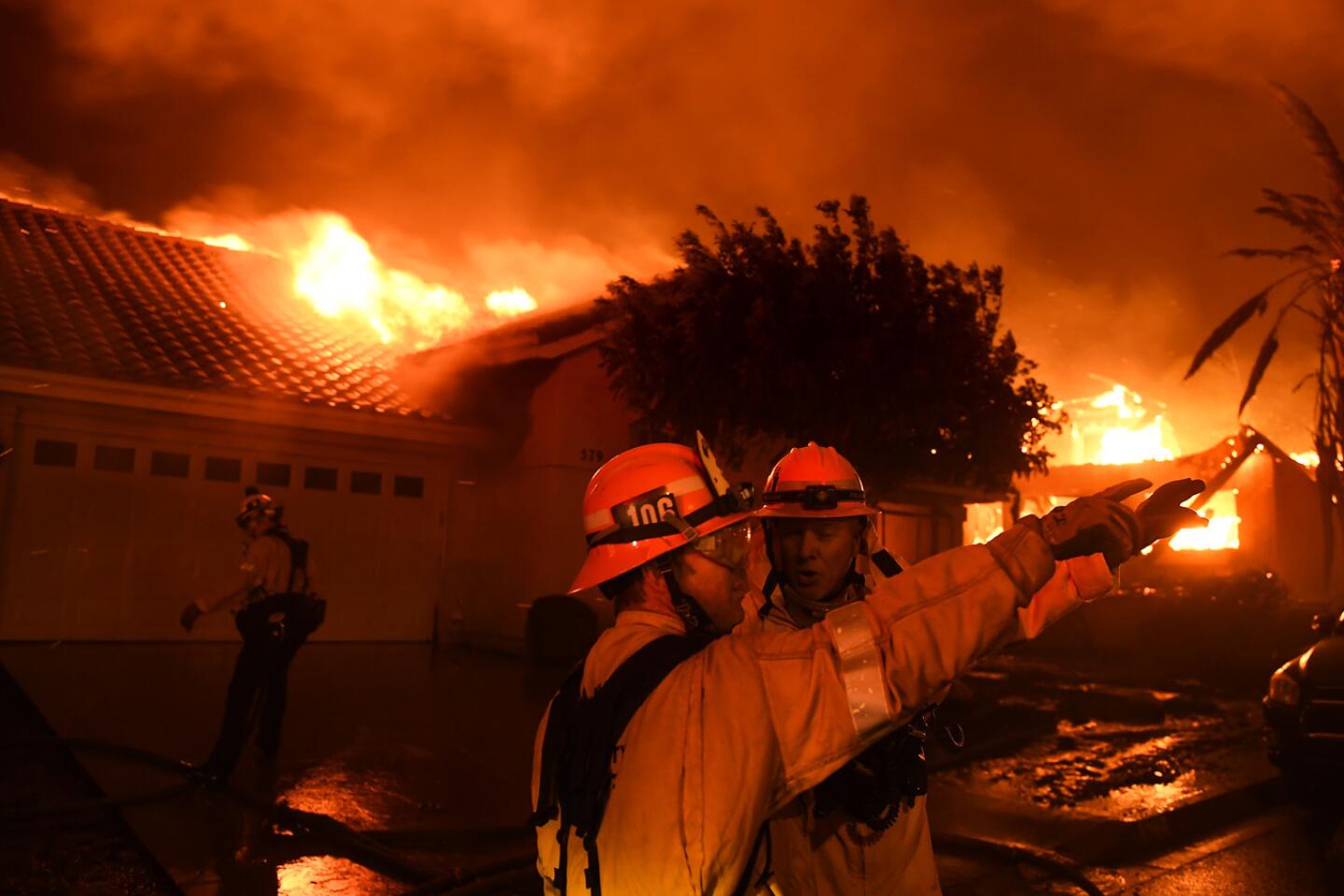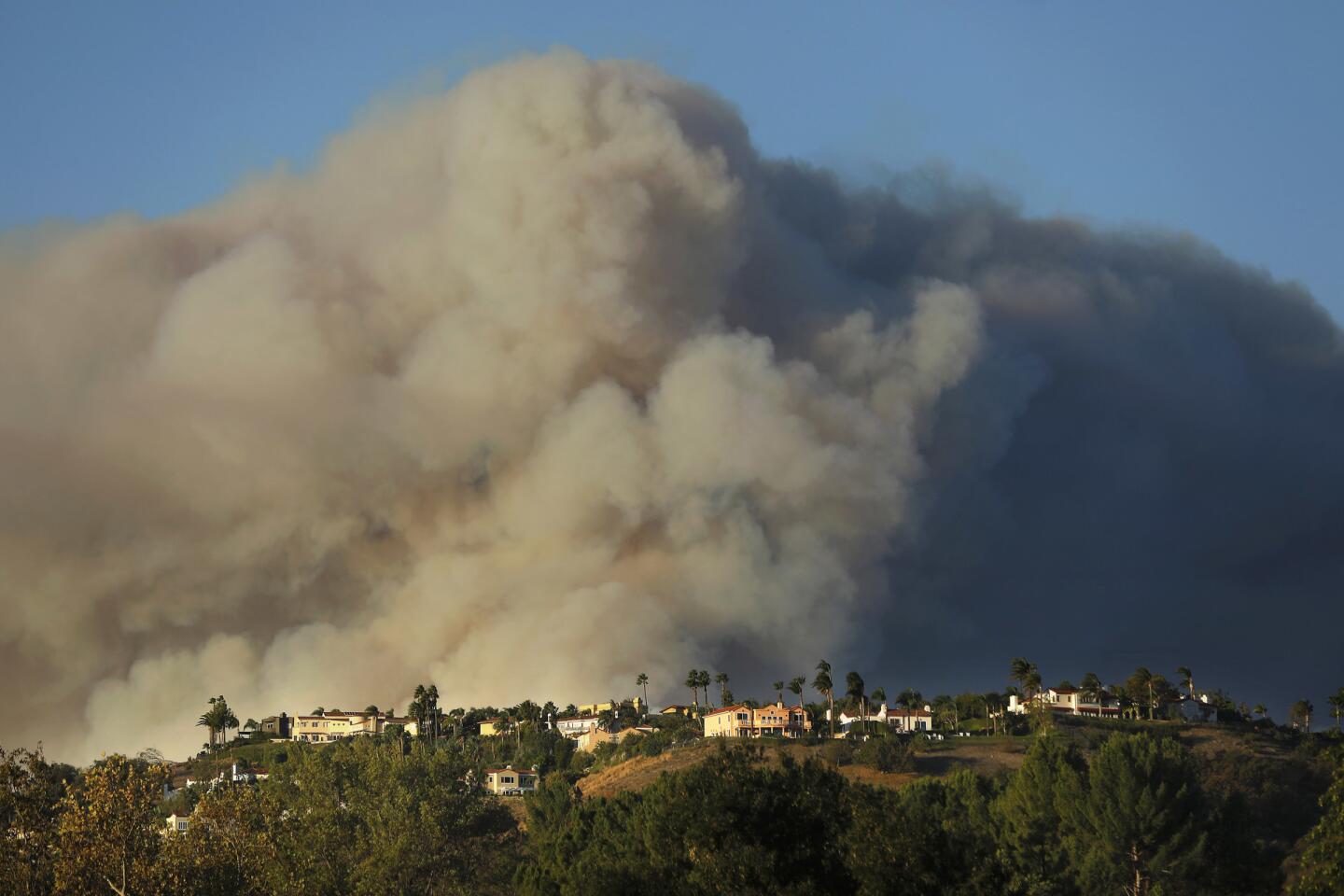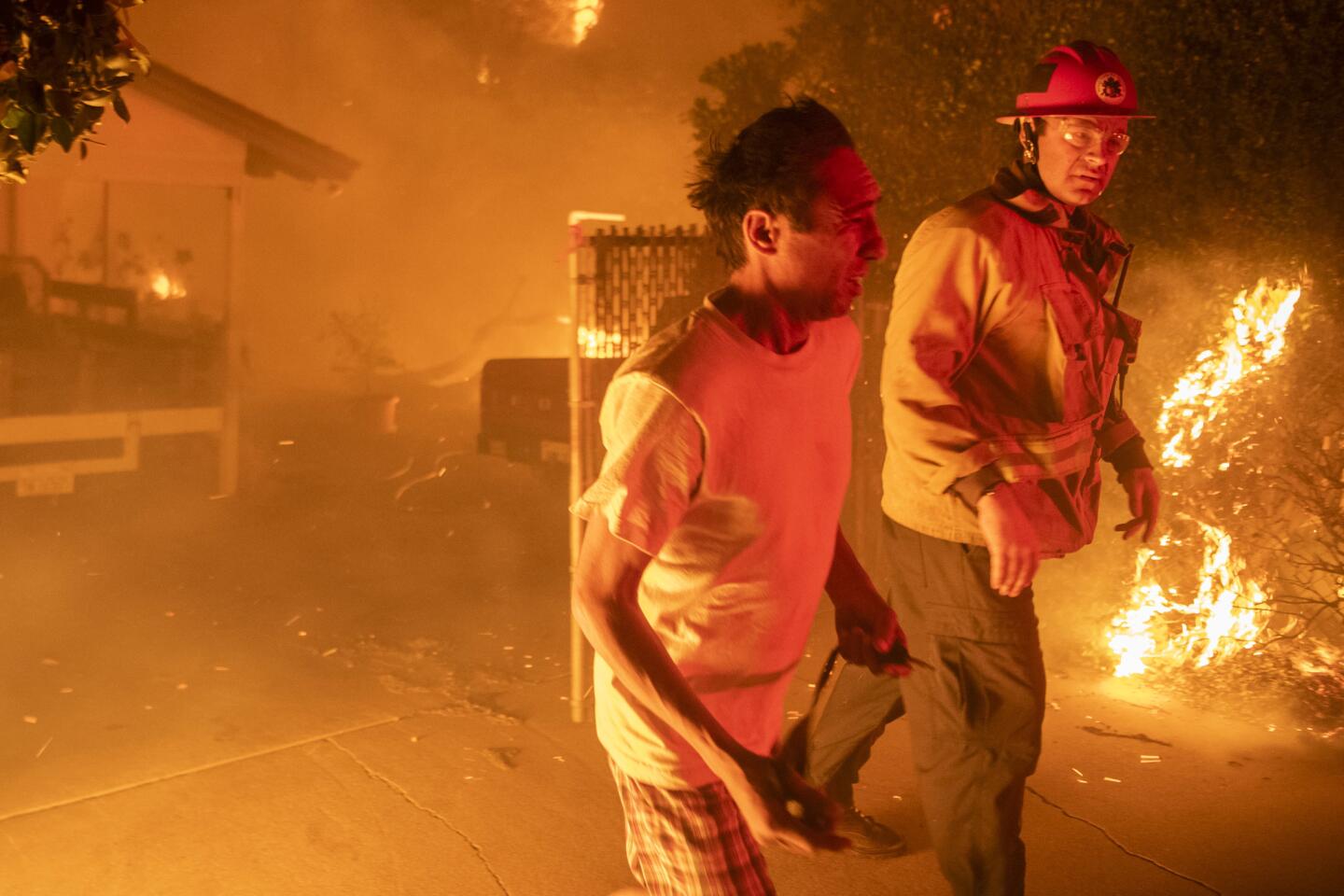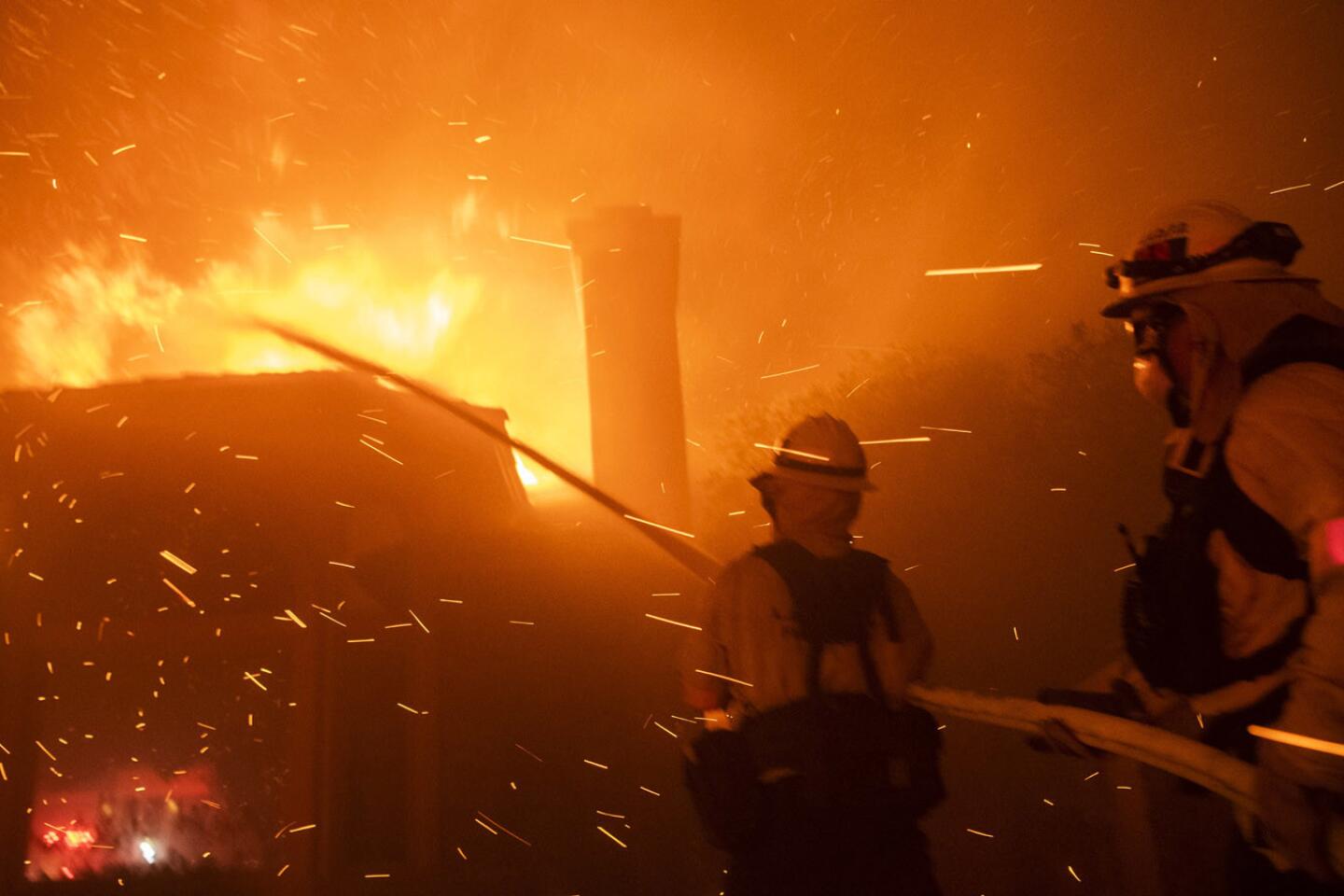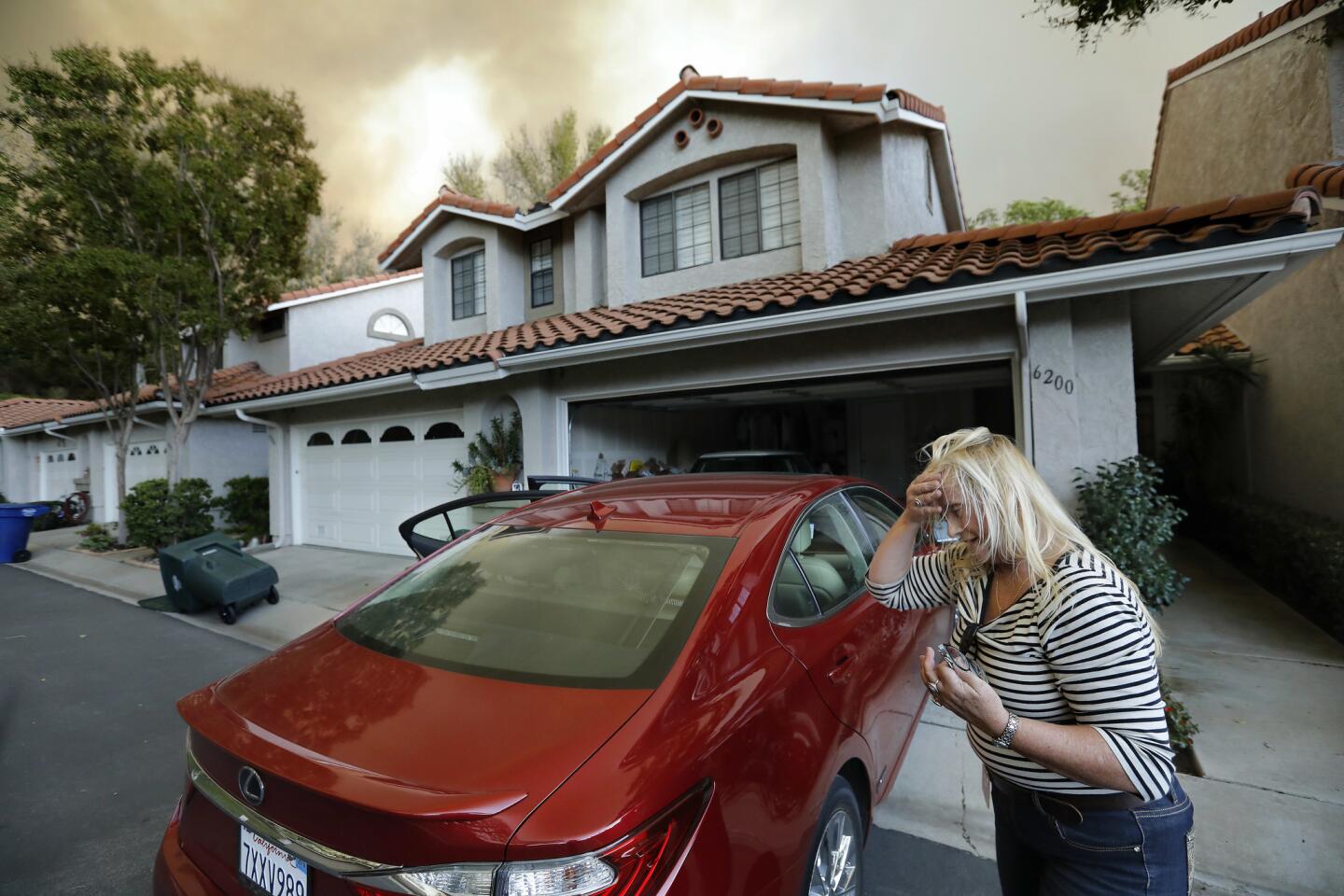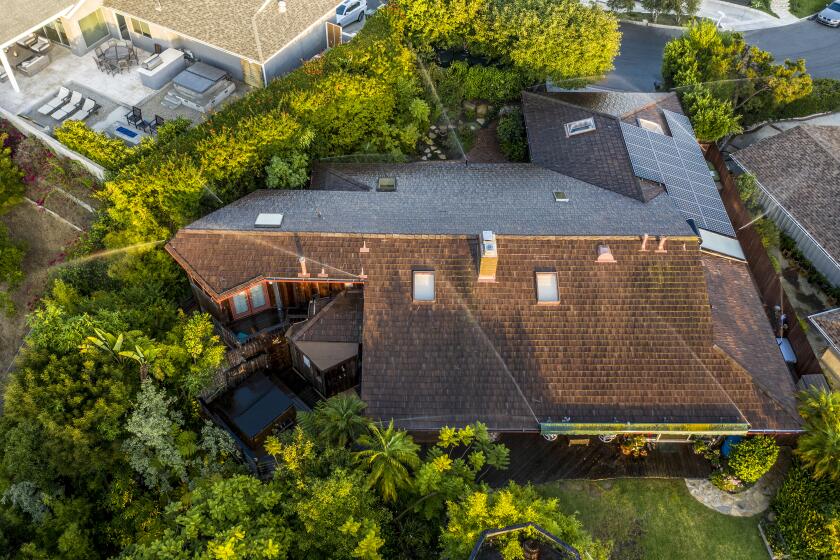Woolsey fire response hurt by poor disaster preparation, lack of firefighters, report says

- Share via
Emergency management officials were unprepared for massive evacuations before the most destructive fire in Los Angeles County history, causing chaos and calls for mutual aid that were not provided in the first critical hours of the Woolsey fire, according to a detailed accounting released Wednesday.
The long-anticipated report, which will be made public at a hearing Saturday, details a wind-blown blaze of “epic proportions” that overwhelmed the region’s emergency response institutions. Agencies were hesitant to offer more help because they had already dispatched firefighters elsewhere or were worried about a blaze breaking out in their backyard.
The 2018 Woolsey fire should serve as a warning, the report said, that residents must take responsibility for their own preparedness and safety, especially when multiple blazes break out.
The destructive fire began Nov. 8, eventually consuming 151 square miles — roughly a third the size of the city of Los Angeles — and destroying 1,600 structures from Westlake Village to Malibu. It caused as much as $5 billion in damage and at least three deaths — and in its charred path left anger, concern and unanswered questions across the region about how emergency officials responded.
The findings add to concerns raised about how the massive fire was battled. A Times investigation in January found that the first critical hours of the firefight were stymied by communication breakdowns and a scarcity of air tanker support, equipment and firefighters.
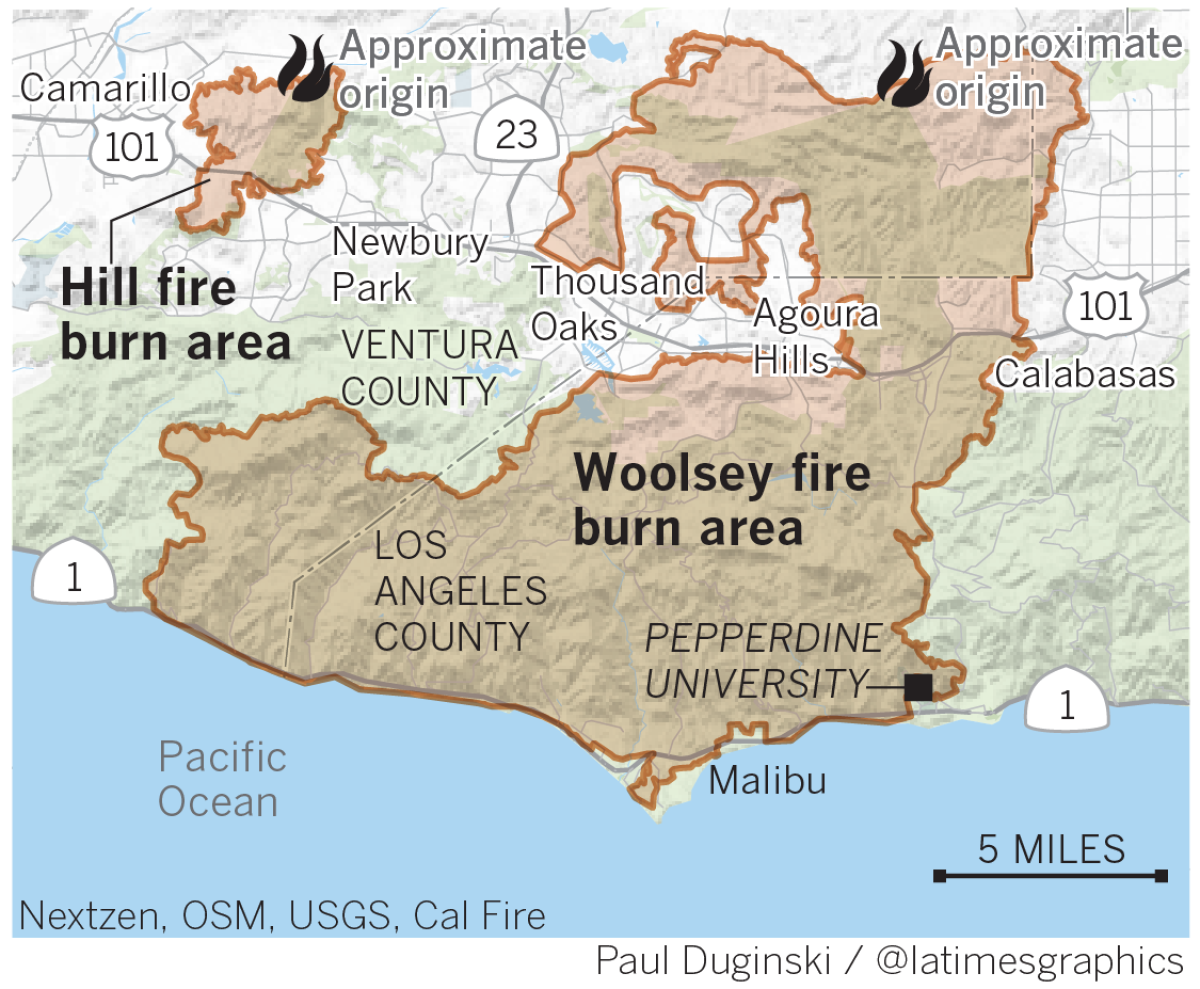
Over 204 pages, the county report seeks to address many of those lingering questions, as it examines the limits of the regional emergency response, including a lack of fire engines patrolling neighborhoods.
The report includes dozens of recommendations to help prepare for future catastrophes — including a clear warning to residents about their role in emergencies.
“The public has a perception that public agencies can always protect them,” the report reads. “As an incident the size of the Woolsey fire shows, this is not always possible.”
That fact became clear to many residents in the path of the fire, which grew quickly and powerfully across a wide swath of terrain — even in an area that has experienced plenty of catastrophic fires.
According to the report, the Woolsey fire forced firefighters to compete for resources as a fire in Paradise, Calif., was already established and another had broken out in Ventura County 30 minutes earlier and closer to homes and buildings.
Initially, the Hill fire in Ventura posed the greater threat. It started about 2 p.m. Nov. 8 and jumped the 101 Freeway in its first 15 minutes, trapping hundreds of motorists and moving three miles in 15 minutes.
In the Woolsey fire’s first hour, 12 aircraft and 27 fire engines were sent to battle the flames, but one aircraft and two engines that were requested as part of that package from the Ventura County Fire Department were denied. At least 100 engines were on the Hill fire at the same time.
“Resources were frequently requested for the Woolsey Fire, and those requests went unfulfilled in the first 21.5 hours of the incident,” the report said.
Responding agencies kept requesting help, to no avail, the report added. “Woolsey Fire incident command chiefs personally called Southland area fire chiefs urgently requesting catastrophic mutual assistance from Thursday night into Saturday morning, which is an unprecedented event.”
The findings prompted L.A. County Supervisor Janice Hahn, who chairs the Board of Supervisors, to back a potential effort by county firefighters to ask taxpayers for more money to increase their ranks.
“Woolsey proved that we can’t rely on mutual aid from other fire departments,” Hahn said. “It has been 20 years since we invested in our fire department, and it is about time we get them the resources they need.”
California still has a good system for sharing firefighting resources, but that day was exceptional, said Brian Marshall, the fire and rescue chief for the California Office of Emergency Services.
“It’s a domino effect,” Marshall said. “The more fire you have, the bigger the fires, the longer they last. That is resource-taxing.”
When winds picked up the first night of the fire and steered it toward the 101 Freeway, commanders tried to prepare.
Firefighters patrolled the flatland north of the freeway to extinguish any ember-sparked spot fires and commanders sent in request after request for air tankers, helicopters and engines. By midnight, commanders had requested 299 additional engines under mutual aid. Only 124 were sent.
By 5:15 a.m. Nov. 9, when the fire jumped the freeway to begin its run to Malibu, that request for engines skyrocketed to 574. Only 285, or about 50%, were sent. By then, other agencies throughout the region were hesitating to help any further, citing concerns of what could happen if a fire broke out in their territory and they had no one left to help.
“During the first two days of the Woolsey Fire, 53% of the fire engine mutual aid requests were unfulfilled,” noted the report, adding that this shortfall, partly explains why Malibu residents may have felt abandoned.
Most of the city’s firefighters were defending Malibou Lake residents, who were in the path of the fire first, and were unable to get back to Malibu because of downed lines or fire dangers.
Other firefighters who could help were instead responding to some 1,800 calls that 911 dispatchers were handling that Friday morning and afternoon, the report said. At the same time, fire commanders were personally fielding requests for property checks from the city’s elite, including Mayor Eric Garcetti.
While the firefighters found themselves shorthanded, Los Angeles County’s emergency management was unprepared.
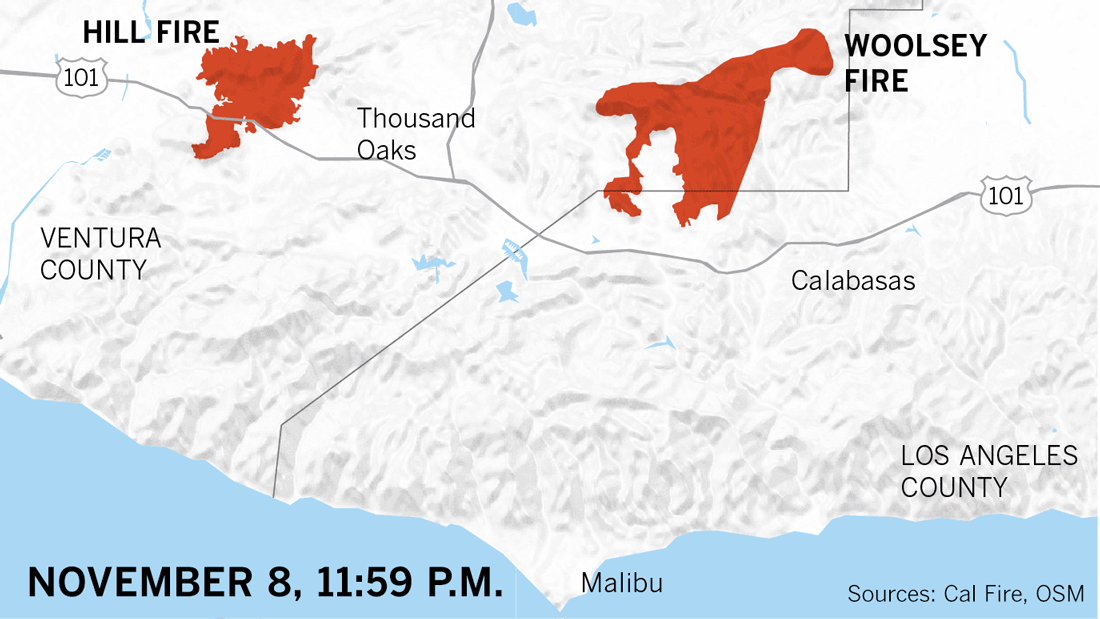
Deputies in the field did not have accurate information for evacuating residents or information on those wanting to stay or returning. Outside of Topanga Canyon, there were no detailed plans on which roads would be the best escape routes or how much traffic they could handle.
There was also no plan for how to convert Pacific Coast Highway into a one-way road, which left a single California Highway Patrol officer to figure it out, the report stated.
When it came to communicating with the residents, authorities relied too much on Twitter with the expectation the media would do the rest.
“During the first two days, even when the [Public Information Officers] were physically together, they had no unified strategy for notifications, nor how to divide the workload,” the report said. “They all came from large organizations and were used to working in their ‘silo’ which is not as effective in a large-scale incident.”
Those missteps are far too common and familiar, said Richard Rudman, vice chair for the emergency alert system committee of California, an advisory group.
“The assumption that everyone is digitally connected 24/7 or even at all is still a faulty assumption,” Rudman said.
He said the public responds best to evacuation information when it’s consistent and comes through an array of mediums including social media, TV and radio. Wireless emergency alerts, which are Amber Alert-style messages that target all cellphones in a given area, work too.
The county is already making changes in emergency planning and how it delegates responsibilities for communicating with the public during one, said Kevin McGowan, who took over as the director of the county’s Office of Emergency Management in July.
“We’re committed to being the most prepared and most capable county in the country as it relates to preparedness, planning and recovery,” McGowan said. “We’re using this report to drive change and improvement countywide.”
The report was the result of a motion by Los Angeles County Supervisor Sheila Kuehl, whose district encompasses Malibu and many of the other fire-ravaged neighborhoods.
It comes after months of analysis by a county contractor, Citygate Consulting of Folsom, which received emergency responder logs, documents and social-media traffic and considered numerous hours of public testimony to reconstruct and explain the event.
Kuehl said the report highlights how emergency officials, despite the planning gaps exposed by the chaos, worked valiantly to save residents. But it also calls on governments, homeowner groups and individual residents to help prepare for the next disaster.
Kuehl said she doesn’t expect the report to fully appease residents who felt ignored as the blaze moved through populated neighborhoods.
“They will say, ‘I don’t care what you say, the fire truck should have showed up and it didn’t,’” she said. “My job, really, is to have the most detailed complete and accurate report that leads to the kinds of recommendations that can be adopted and realized.”
The report offers some long-standing advice for residents in fire-prone areas. It urges residents, and communities collectively, to harden buildings against ember ignition and follow guidelines for limiting vegetation around structures.
Still, “there must also be an ongoing public policy discussion regarding significant development in very high or high fire hazard severity areas,” said the report, referring to state-defined zones. “We cannot expect that all population growth in very high or high fire hazard severity areas can be protected simply by increasing resiliency to wildfire and by adding more fire engines.”
Elaborate sprinkler systems could be a waste of money in protecting your home from wildfire. A better strategy, experts say, is to team up with neighbors to fireproof your entire community.
Overall, the report includes more than 80 recommendations, chief among them suggestions for better communications.
It calls for a study to help agencies better understand the necessary ratio of emergency workers in relation to the population of people and animals — and for strategies to help fire officials deal with the “fog of war” that can hamper situational awareness.
Technology upgrades, such as adding global positioning system tracking to all county vehicles and establishing systems for using low-tech tools like AM or amateur radios, which are more durable during catastrophic events, should become the norm, the report states.
It also calls for a “playbook” that would detail evacuation plans with predefined routes and appropriate signage, with contraflow clearly studied and established for the Pacific Coast Highway.
The draft report will be presented during a public hearing at 10 a.m. Saturday at Agoura High School. Another hearing is planned for November, allowing additional input from residents, before the findings are finalized.
More to Read
Sign up for Essential California
The most important California stories and recommendations in your inbox every morning.
You may occasionally receive promotional content from the Los Angeles Times.

